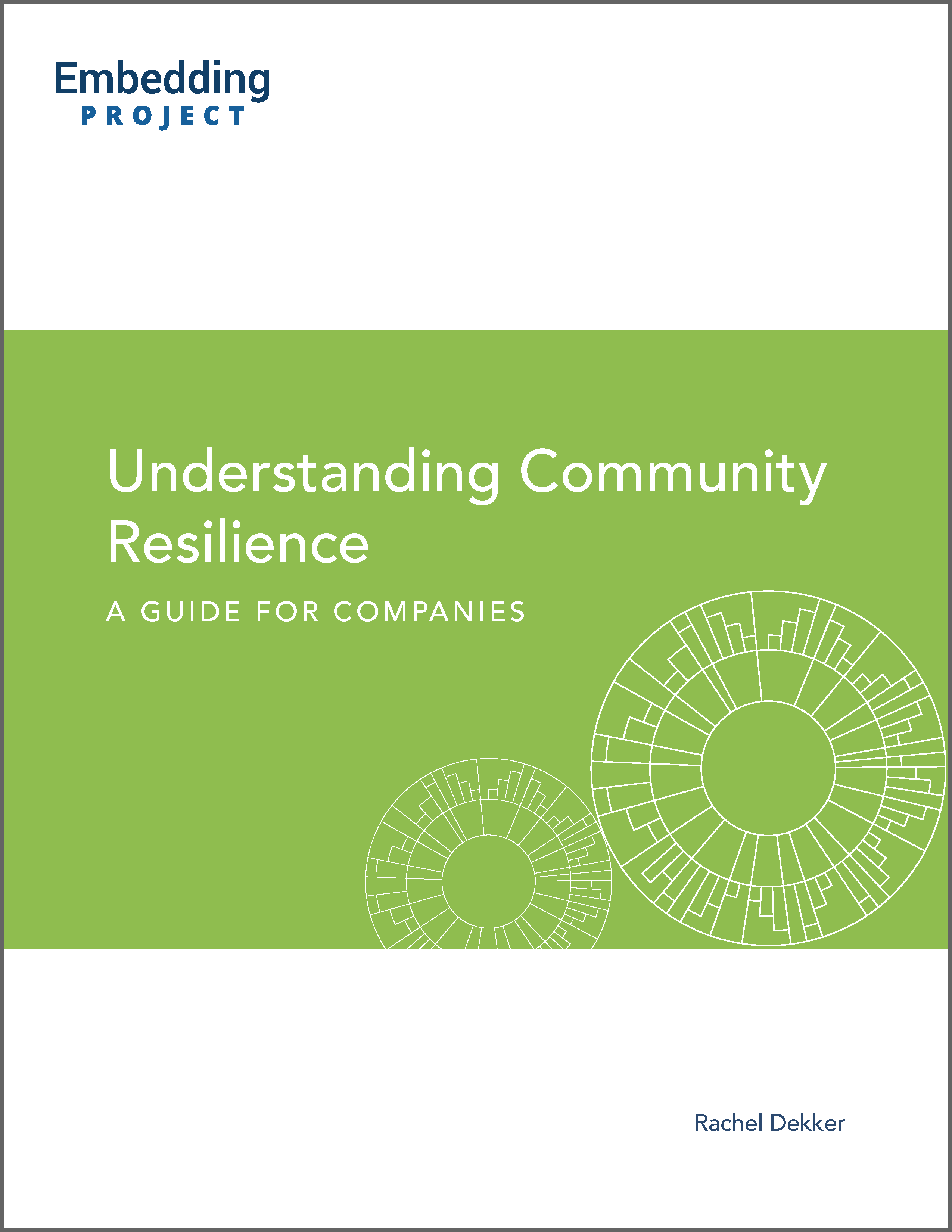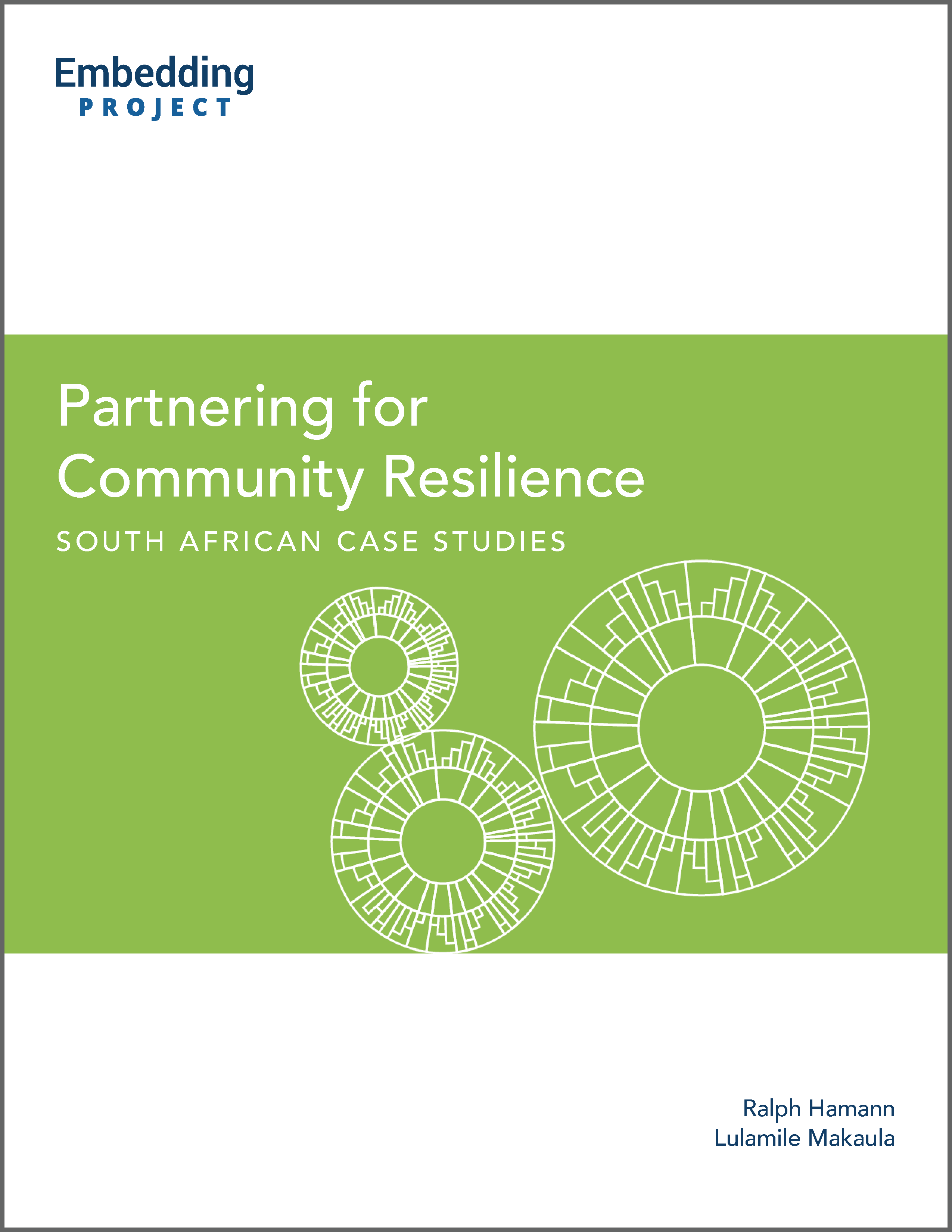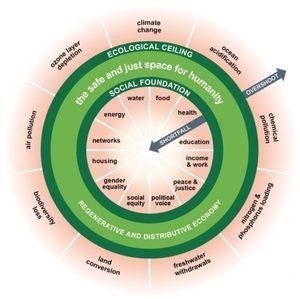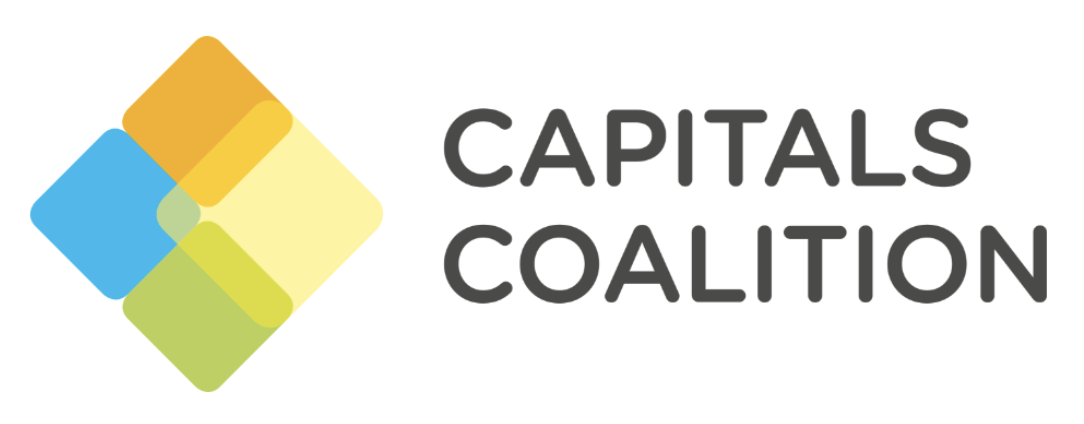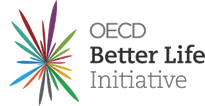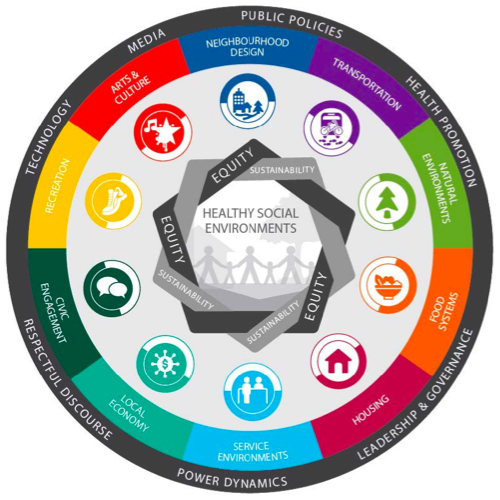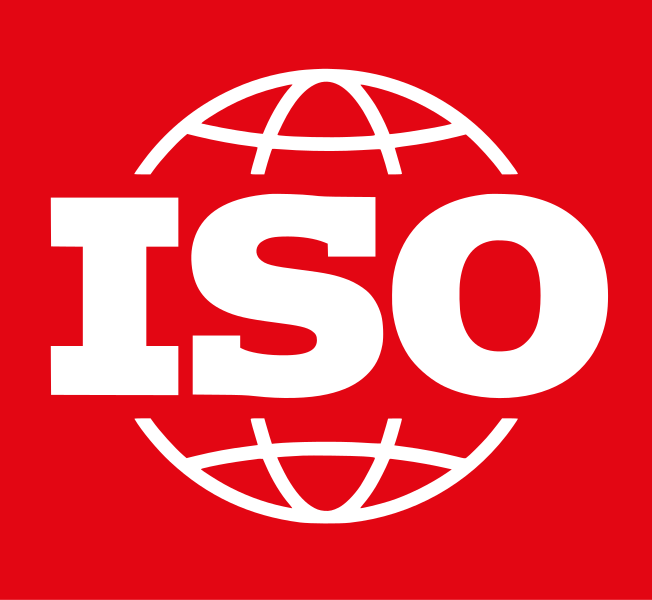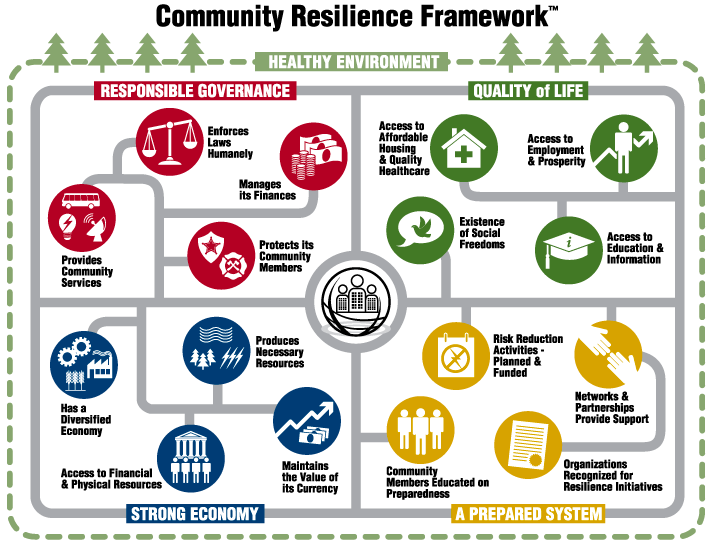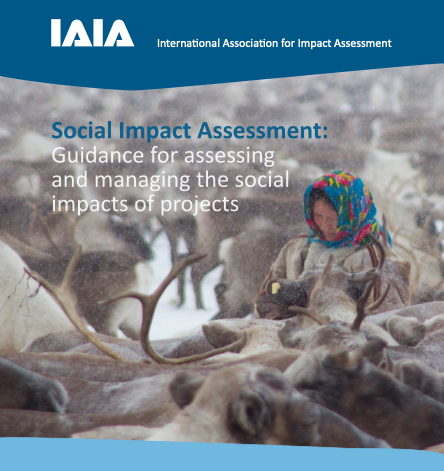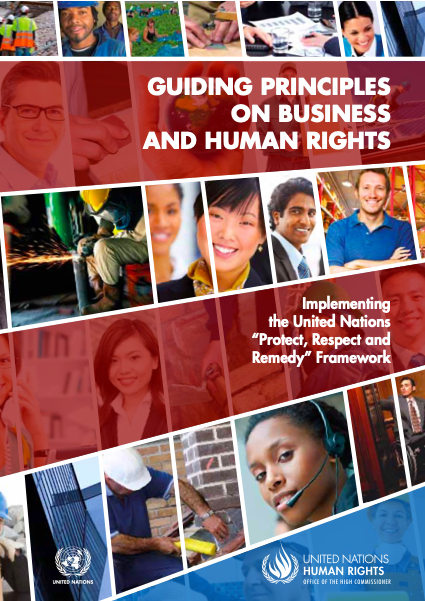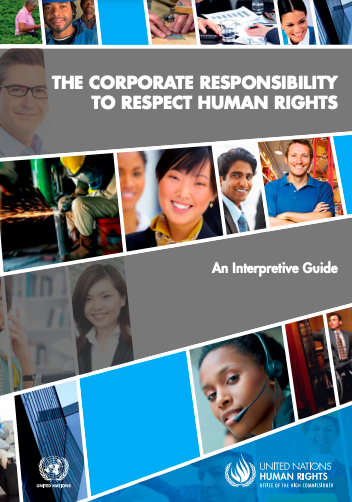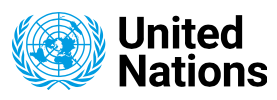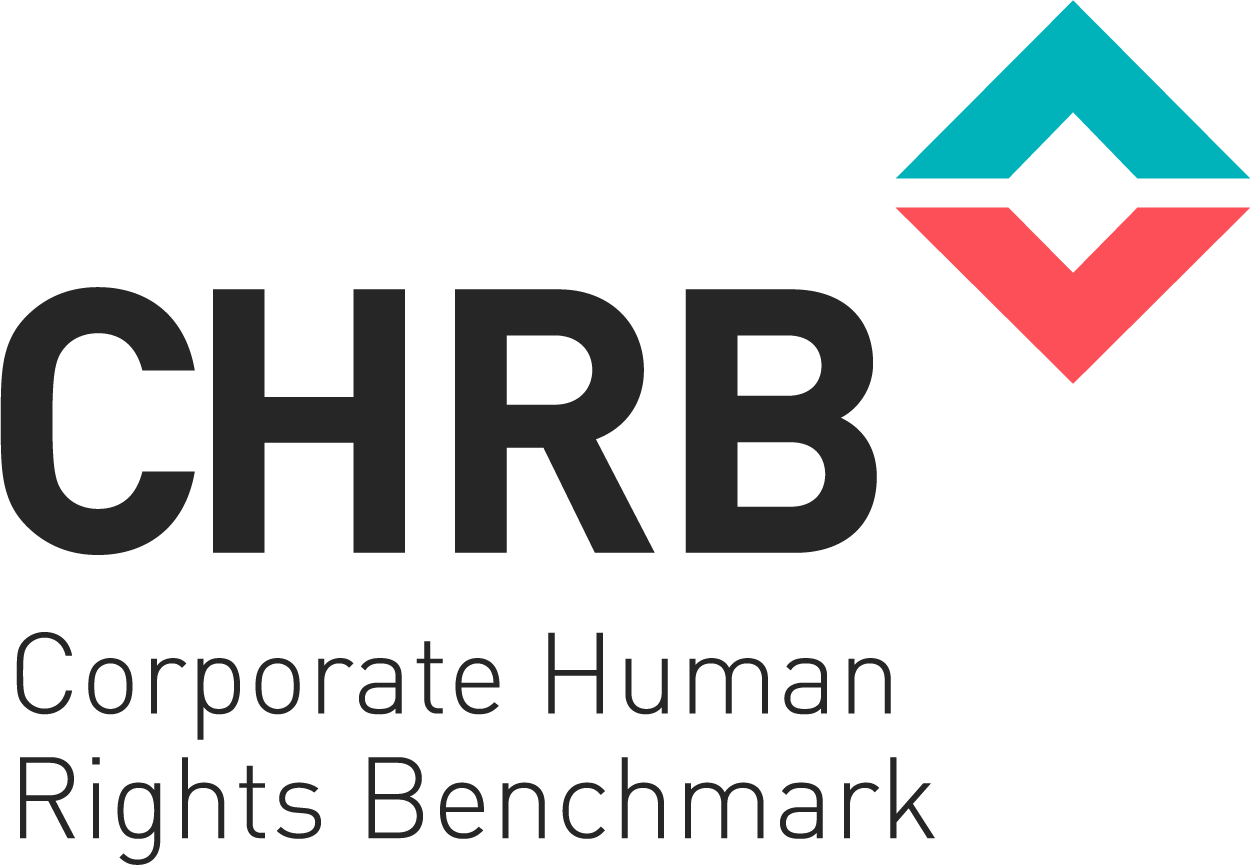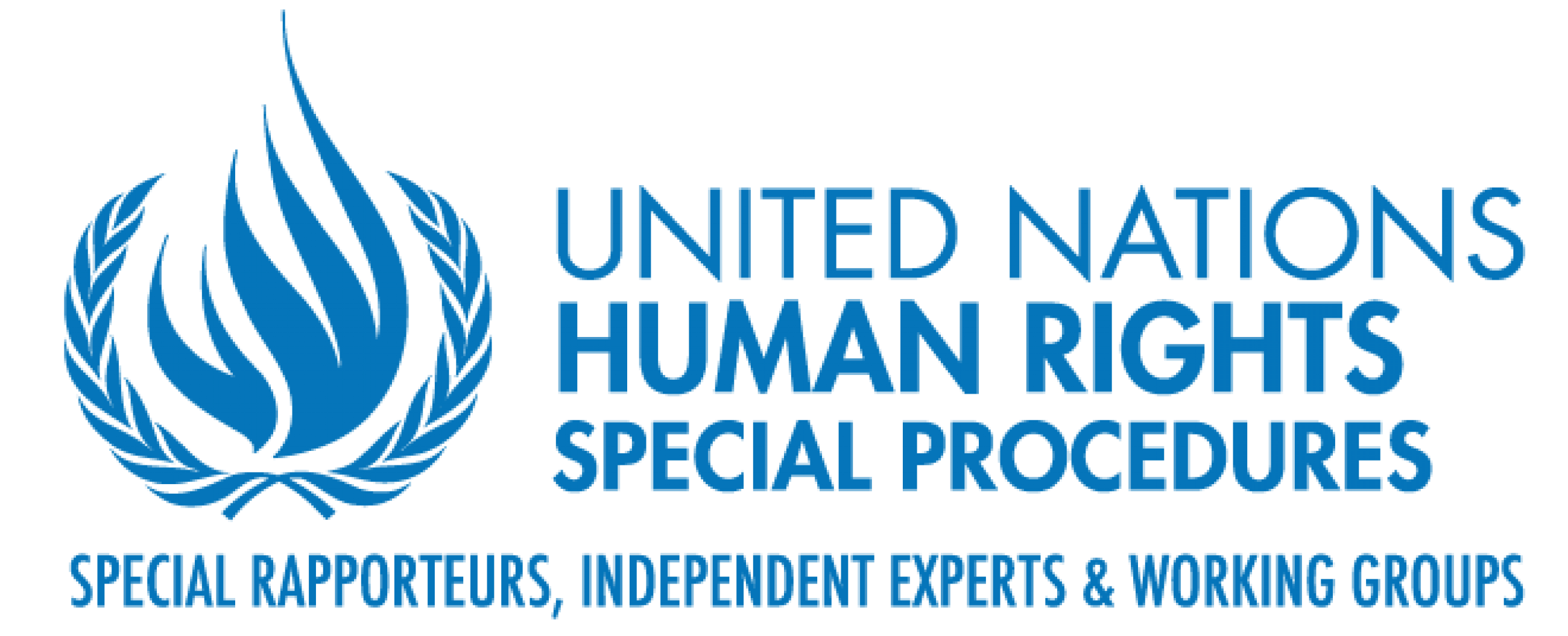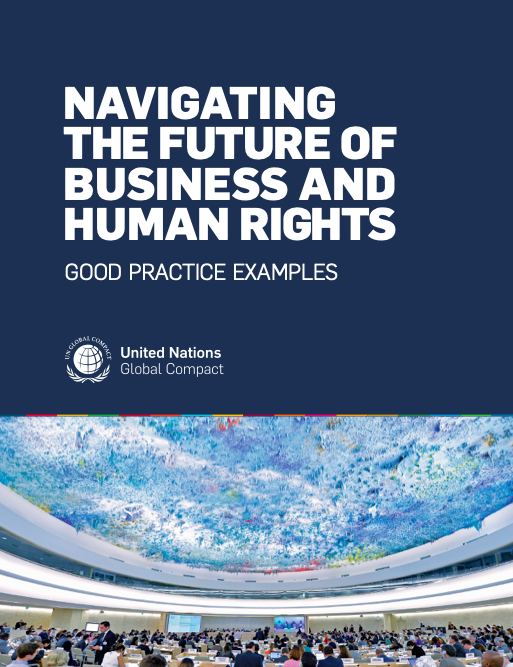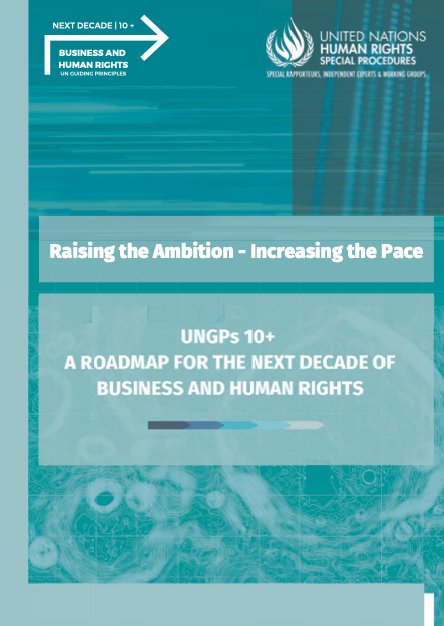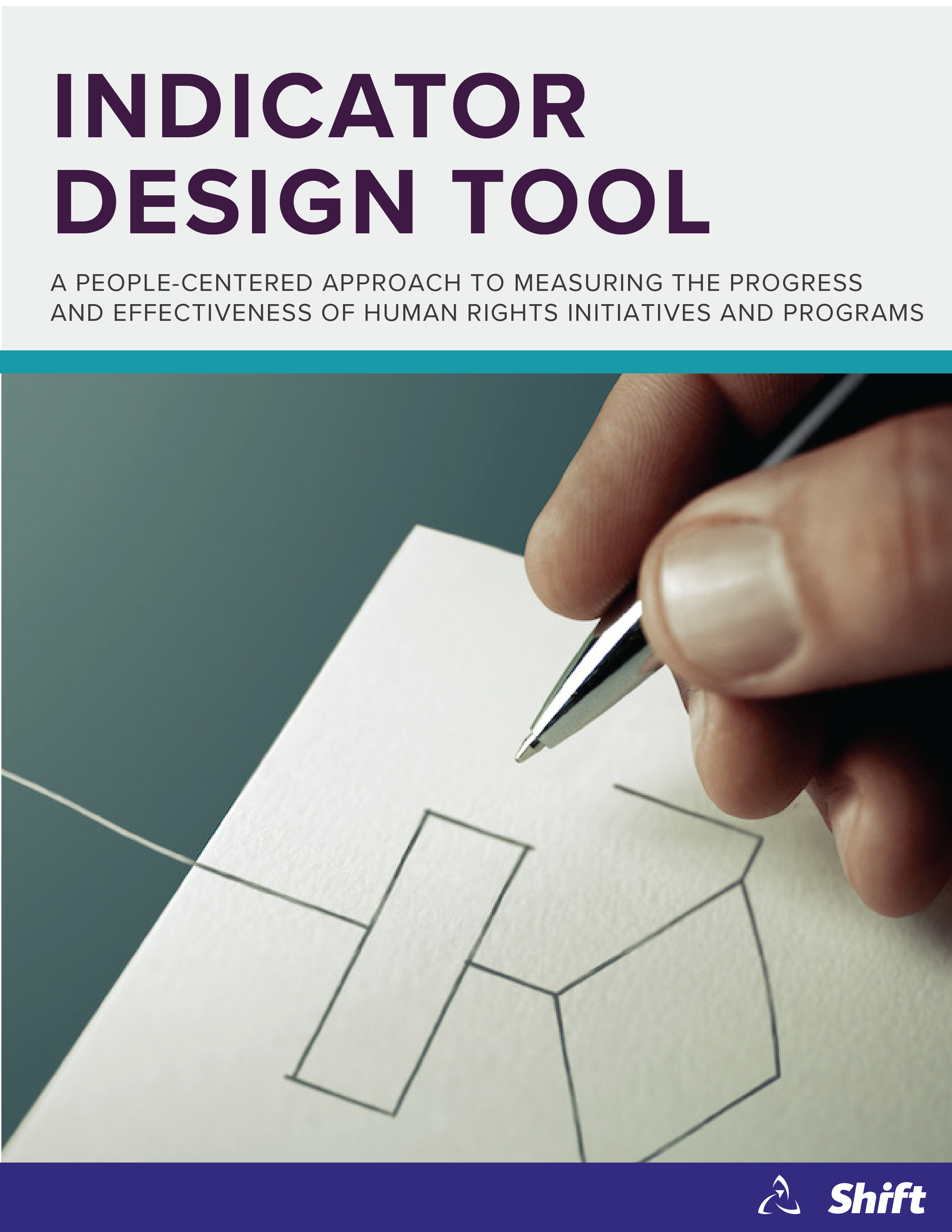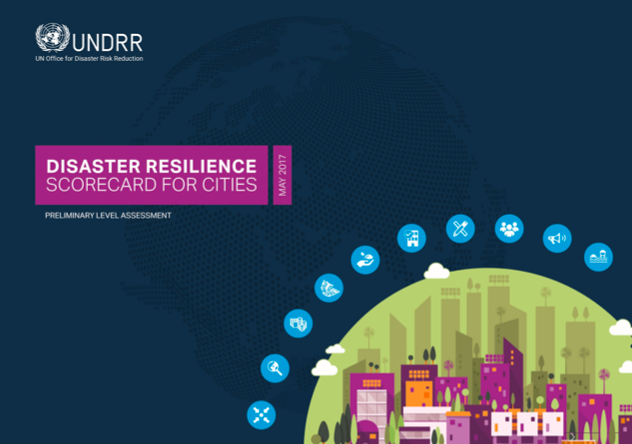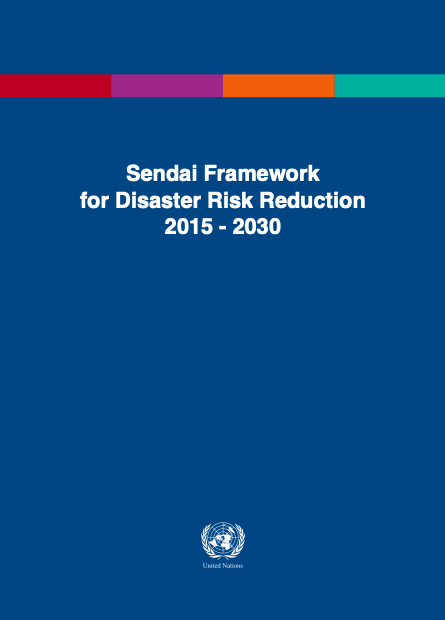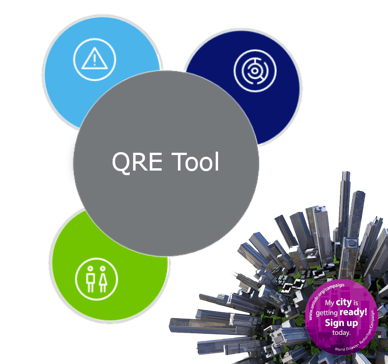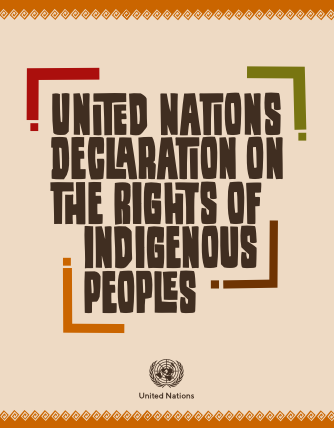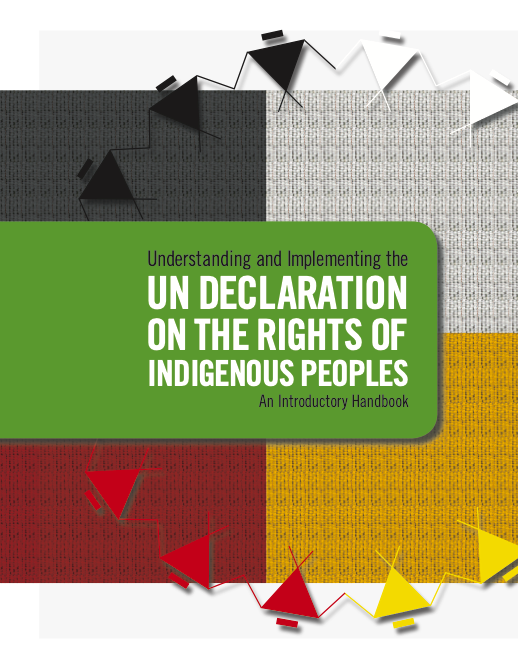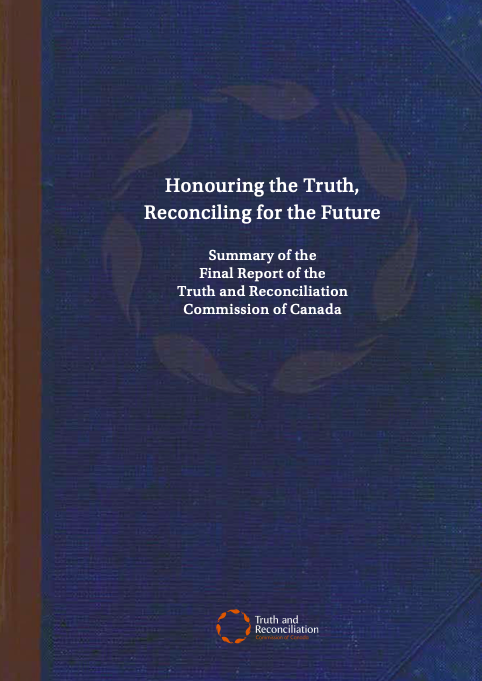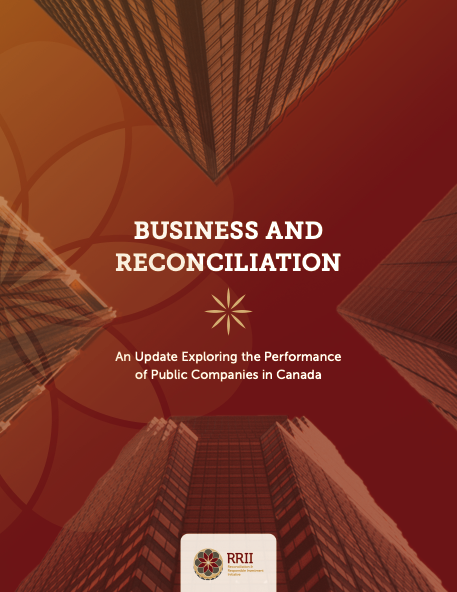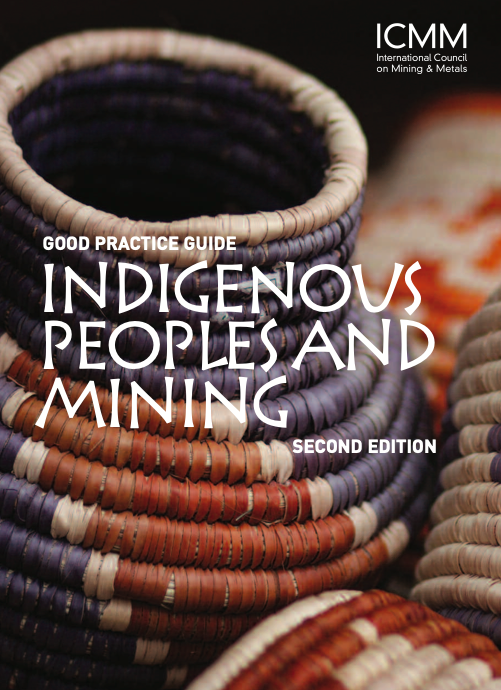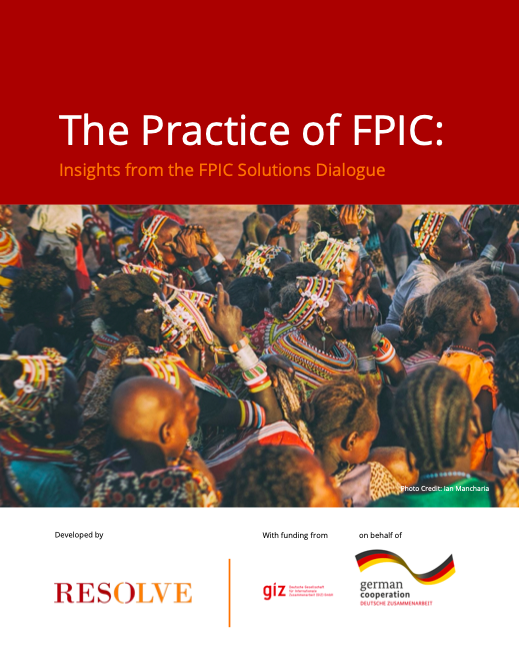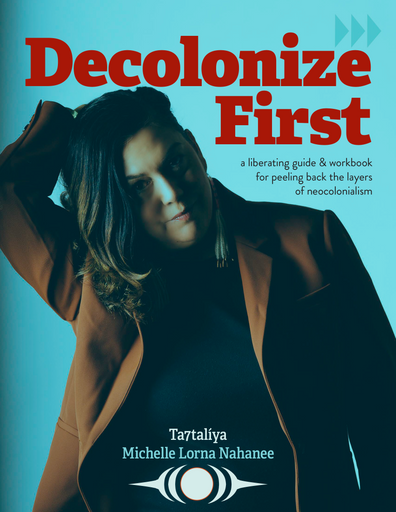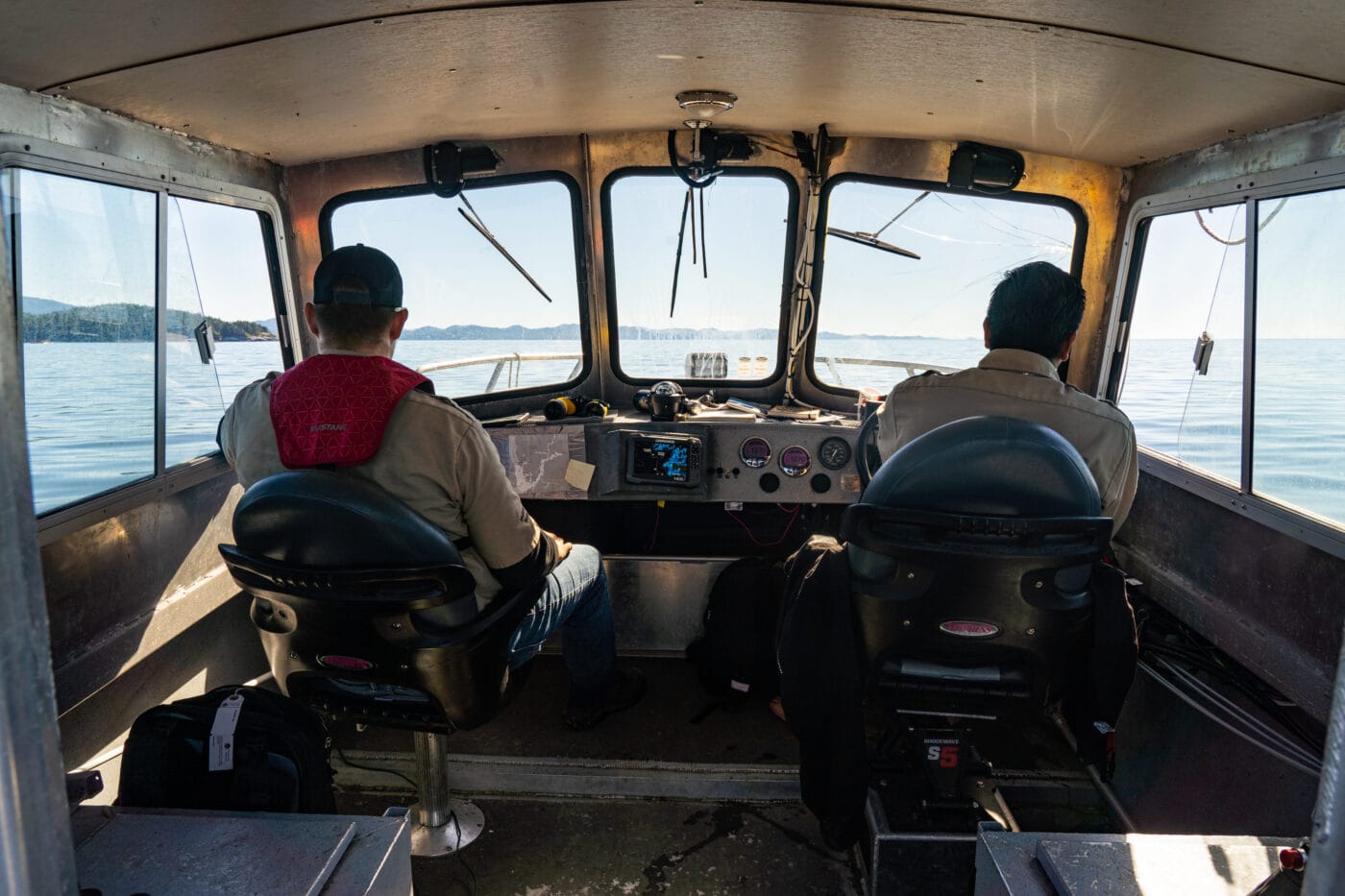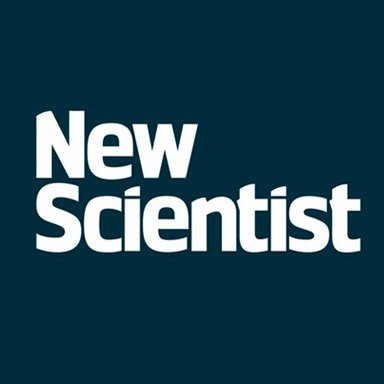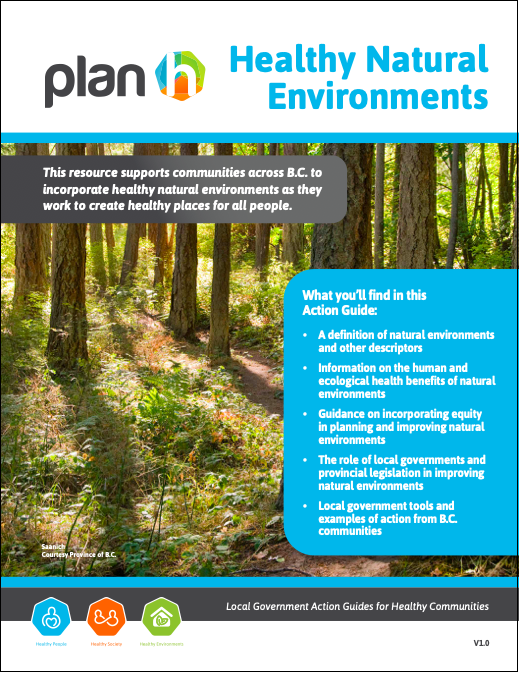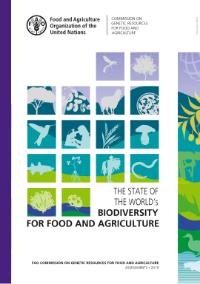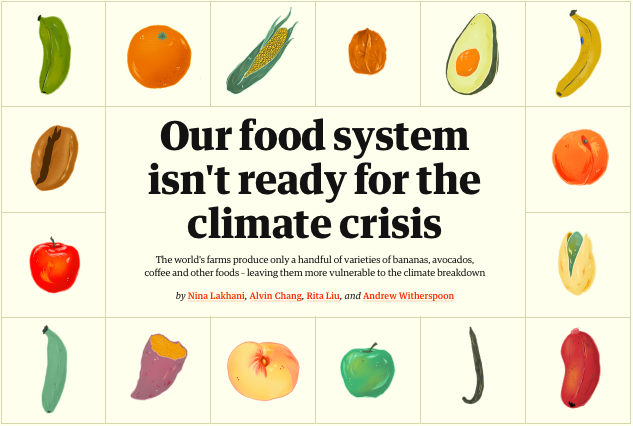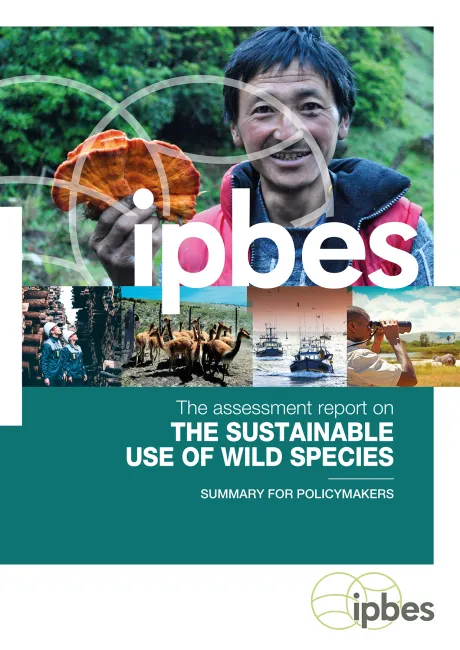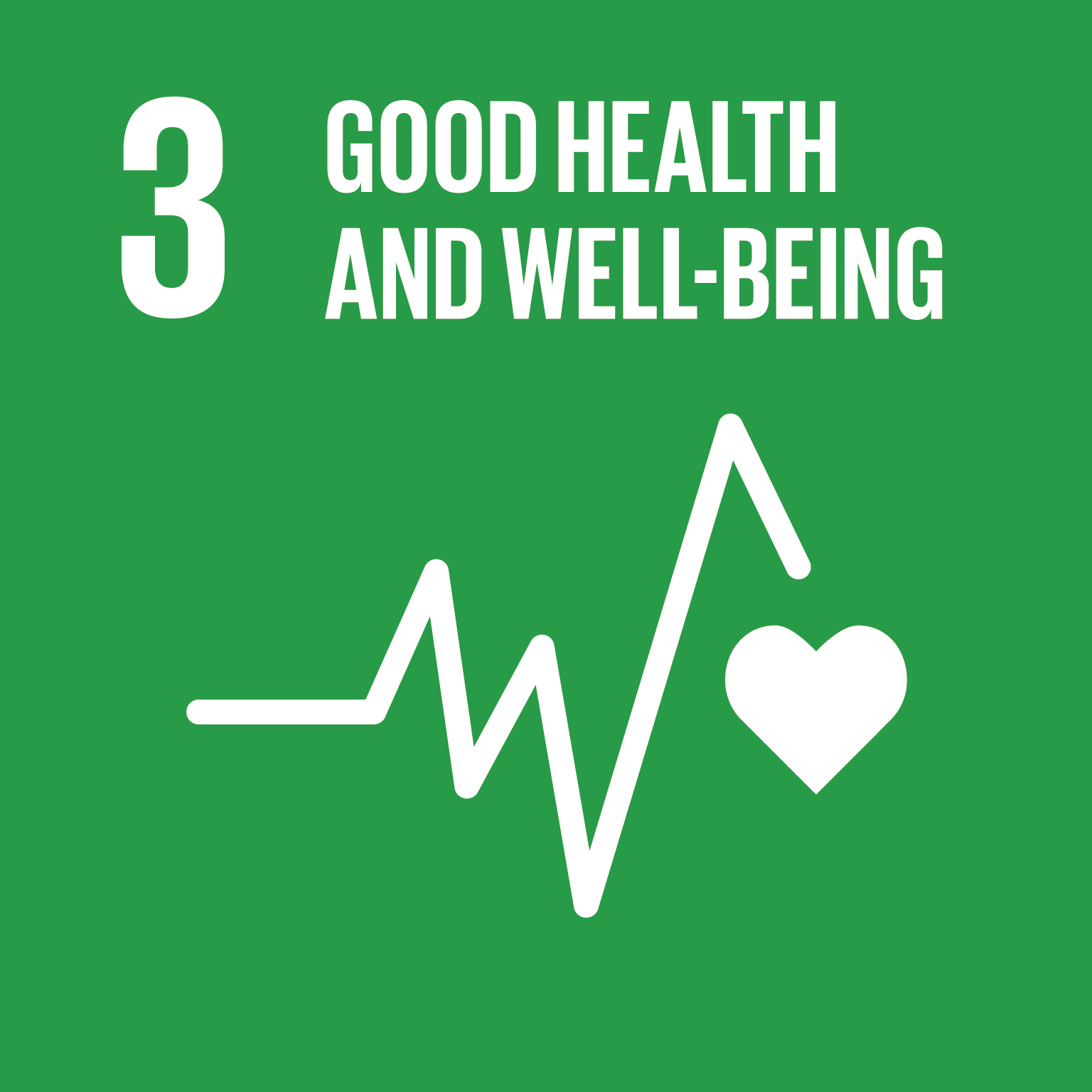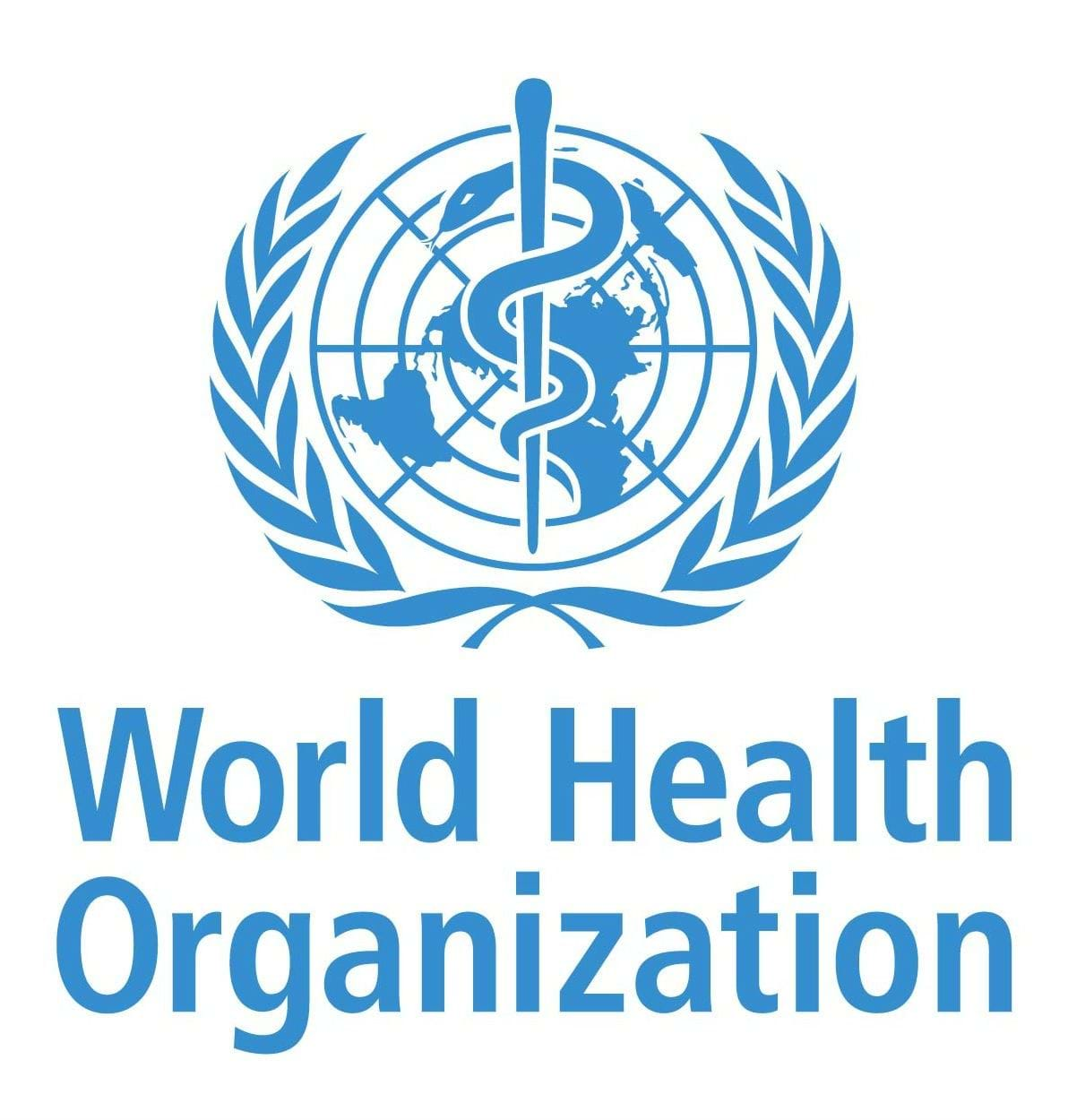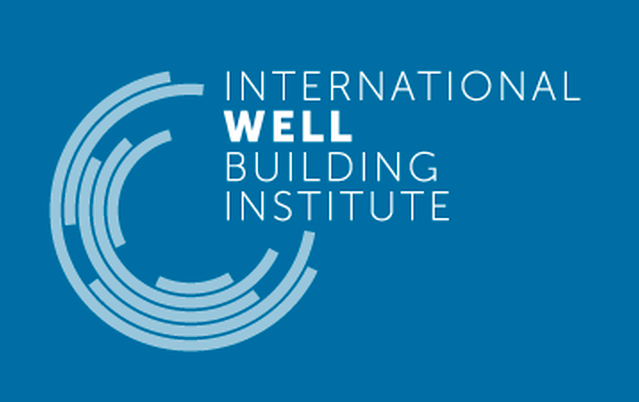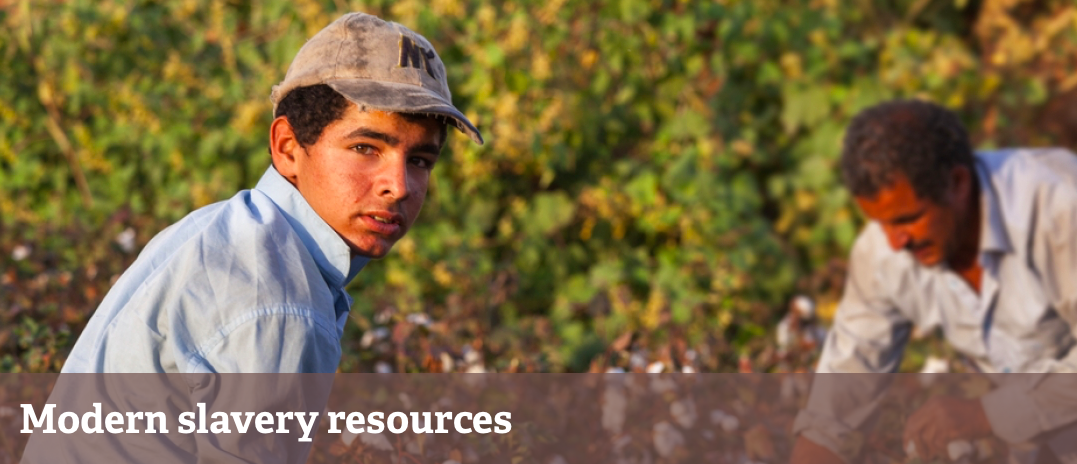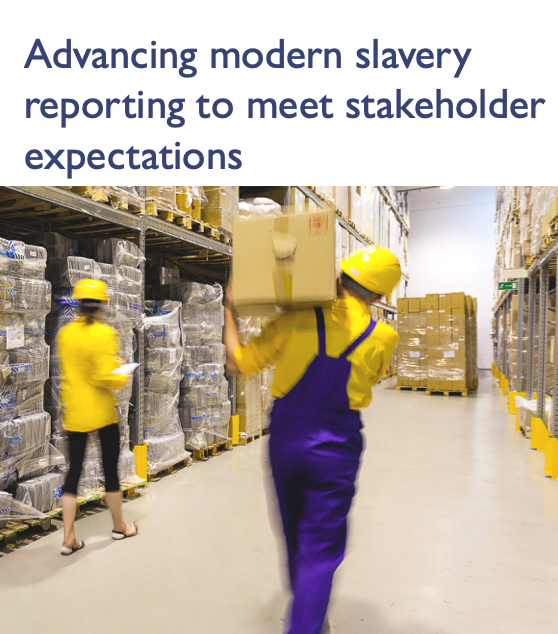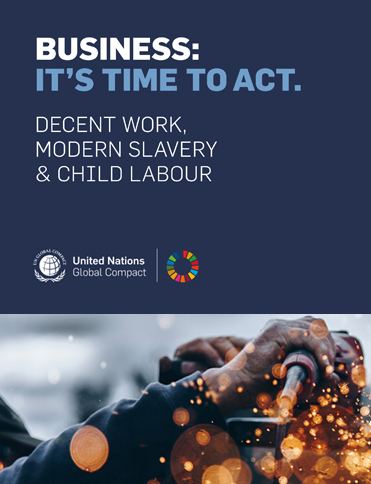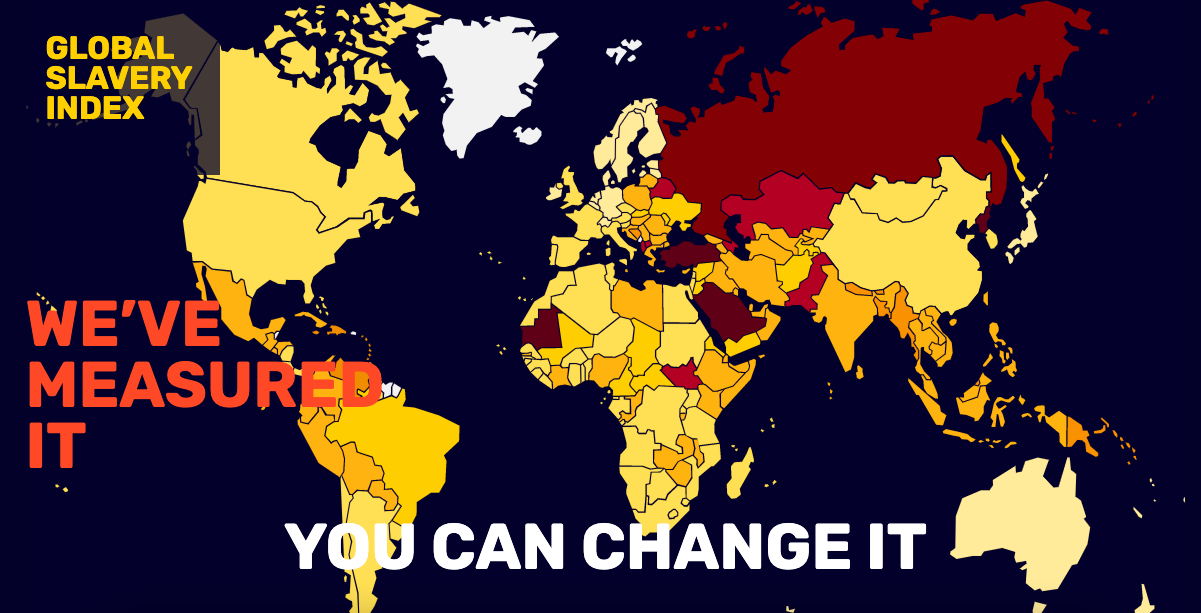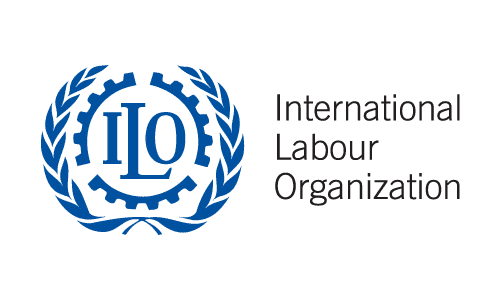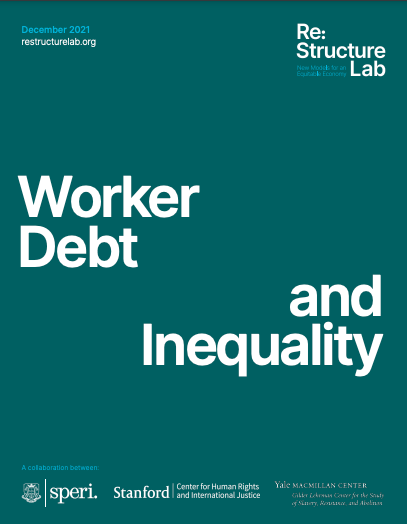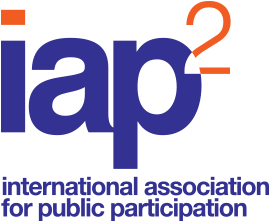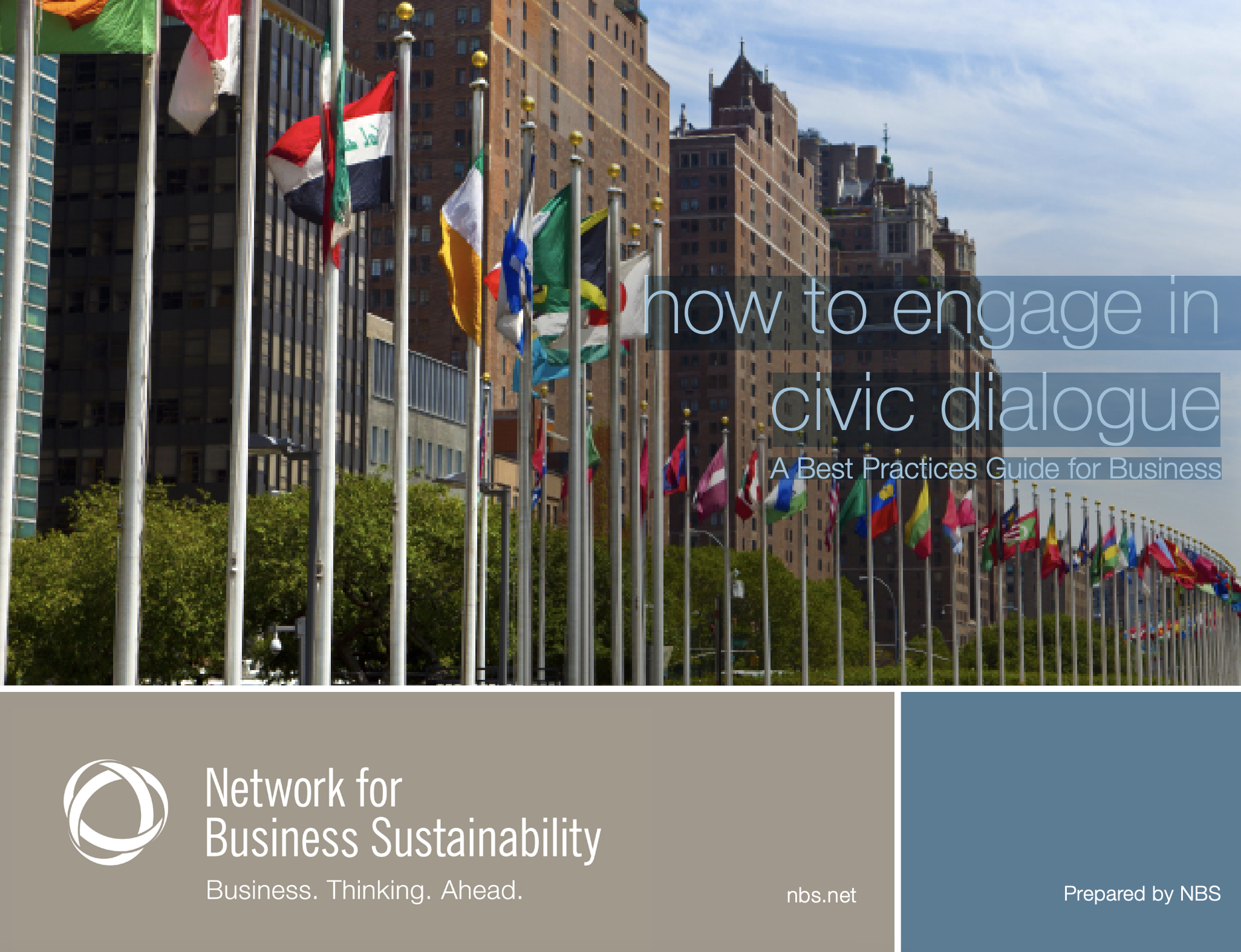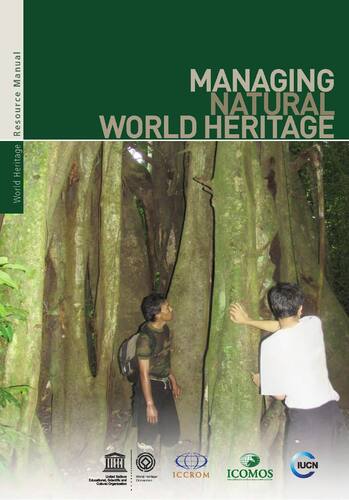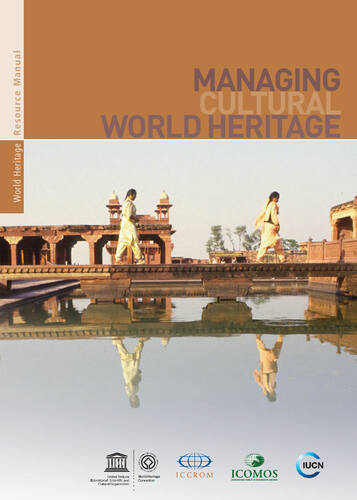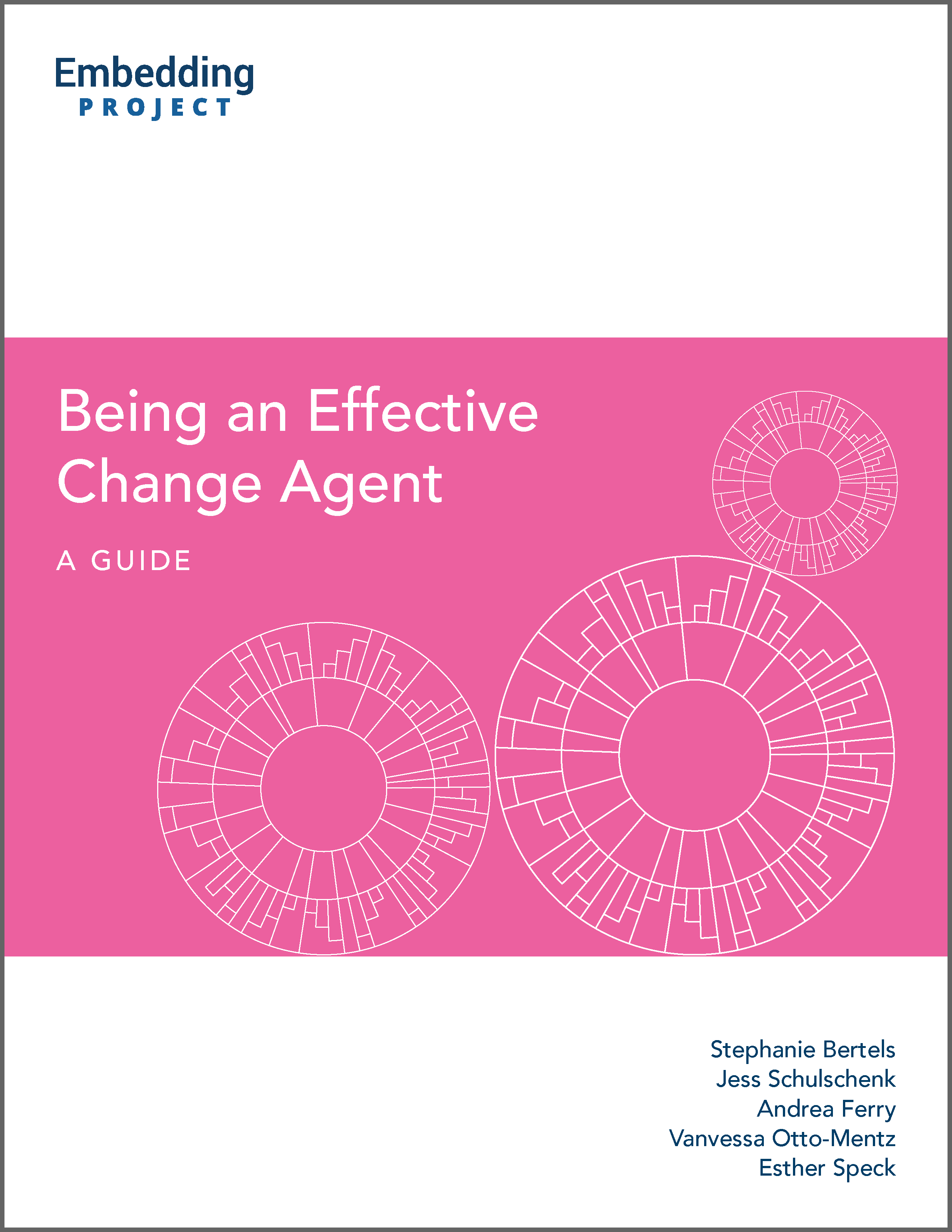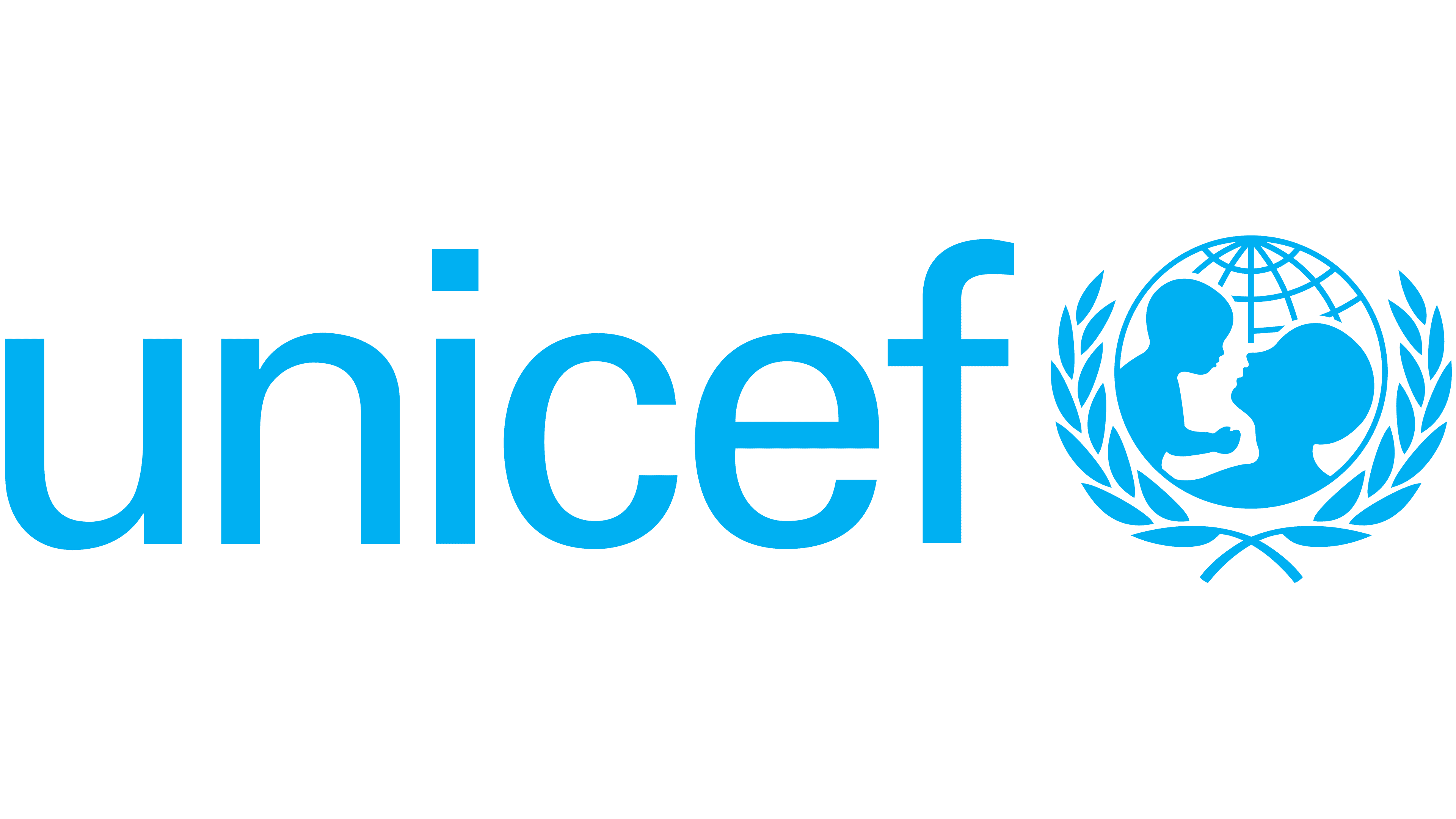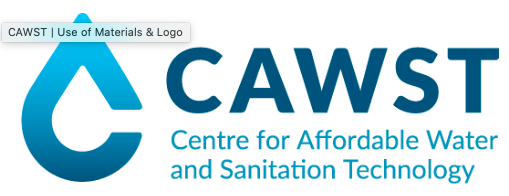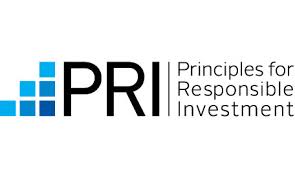Rights and Resilience in Communities
Description
This includes the conditions that support community resilience and the human and group rights that help ensure their realisation. Companies should take care not to infringe on rights and should aim to support self-defined community resilience and support the community’s enjoyment of their human and group rights.
Share this Issue on:LinkedIn
Resources
The right to a clean, healthy, and sustainable environment
In August 2022, the United Nations General Assembly passed a resolution recognising the right to a clean, healthy, and sustainable environment as a human right. States, international organizations, businesses, and other stakeholders have a responsibility to “scale up efforts” to ensure a clean, healthy, and sustainable environment for all.
Understanding Community Resilience
The success of a company is directly linked to the resilience of the communities where it operates, as well as the resilience of the communities of its workers, its suppliers, and its customers. Increasingly, communities around the world are starting to contemplate their resilience and long-term sustainability. As a result, companies are expected to account for their impacts on community resilience. This guide will help you to understand why community resilience matters, how communities are beginning to approach resilience, and how your company can explore its role in fostering community resilience.
Partnering for Community Resilience: South African Case Studies
Proactive companies are recognising the strategic relevance of community resilience to their short- and long-term success. Community resilience is a positive dynamic between social, economic, and ecological systems that ensures community wellbeing and effective responses to shocks and disruptions, such as fires, droughts, or economic crises. This guide shares five in-depth case studies of companies engaging in partnerships for community resilience in South Africa. We distil the key lessons from these case studies for corporate managers who are planning or implementing partnerships for community resilience.
The Social Foundation: 'A Safe and Just Place for Humanity'
Kate Raworth's “Doughnut” model is a key framework for understanding sustainability context. Building on the planetary boundaries framework as a 'ceiling', it adds social foundations as a 'floor' and underlines the need to operate in the space between. The social foundation is made up of 11 boundaries that draw attention to communities needing access to basic resources to fulfill their human needs. This access needs to be achieved in a way that does not place undue stress on the earth's resources. The framework is based on the premise that we should be striving to build and maintain social foundations while staying within planetary boundaries.
Community Resilience: Why It Matters to Companies and 3 Things Your Company Can Do
The increasing pressure on companies to account for their impacts on the environment and on communities has been hard to miss. And many companies are making an effort to “do good” in the community, but they are often unsure how best to go about it. This blog post helps companies to figure out how they can contribute.
Social & Human Capital Protocol
Developed by WBCSD and launched by the Capitals Coalition, the Social & Human Capital Protocol is an excellent starting point for recognising and leveraging people and relationships as drivers for sustainable growth. Divided into four steps (Frame, Scope, Measure & Value, and Apply), the Protocol aims to clarify best practices, boost the positive impacts of business, and improve business credibility by integrating the consideration of social impacts and dependencies into performance management and decision-making. The Social & Human Capital Coalition has also developed case studies, sector guides, and a toolkit to complement the Protocol.
Applying resilience thinking
Based on the book "Principles for Building Resilience: Sustaining Ecosystem Services in Social-Ecological Systems," this short article introduces seven principles that can help you to better understand and practically apply resilience thinking within your organisation's decision-making.
City Resilience Framework
This report from Arup International Development and the Rockefeller Foundation introduces a framework for articulating city resilience, and was used to create the City Resilience Index. This report was informed by literature, case studies, and fieldwork, and it introduces a range of dimensions, indicators, and goals that will help you to understand the qualities of city resilience and recognise the types of actions that will advance city resilience.
City Resilience Index
Developed by Arup and supported by The Rockefeller Foundation, this tool helps users to understand the challenges of assessed cities in a systematic way. The tool allows you to carry out a resilience assessment of your city and generate a resilience profile; view and understand ready-made resilience profiles for various cities around the world; and explore solutions that are currently advancing the resilience of cities. This tool will help you to determine the baseline resilience of cities related to your present and future operations, value chain, and strategy, and will help you to measure progress.
OECD Better Life Initiative: Measuring well-being and progress
The OECD Better Life Initiative can help you to build a more comprehensive and nuanced understanding of how peoples lives are improving or degrading in regions around the world, as well as the types of policies and actions that can help to improve the lives of people in communities. At a glance, the Better Life Initiative has created excellent resources - such as their How's Life? report, Better Life Index, and comprehensive surveys - centered around the key themes of reporting, communicating, understanding, developing, building, and adapting. These resources can provide insights into quality-of-life factors that impact wellness; material conditions that are shaping people's economic options; and compare statistics between OECD and partner countries.
Healthy Social Environments Framework
This is an excellent framework for building your understanding of the social environment, which is the underlying social, cultural, and economic context within which communities live, work, and play. It introduces a matrix of core social environment features, core values, tools & facilitators, and outcome categories to highlight the inextricable and mutually-reinforcing connections within social environments. This user-friendly tool can help you with informing, influencing, and making community planning decisions, and can be used to initiate and organise conversations about social connections in communities, as well as to frame and organise presentations, discussions, and proposals on the subject.
Sustainable cities and communities - Indicators for city services and quality of life
ISO 37120 provides definitions and methodologies for a set of sustainable city indicators, and will help you to determine baselines for how cities may steer and deliver services and improve quality of life. If you are looking to contribute to city service performance and to improve the livability of the spaces in which your business operates, this standard is a good place to begin. The standard addresses a range of factor that maintain and advance the resilience of cities, including economics, education, health, recreation, shelter, transportation, and . For each of these factors it provides data and calculations that can be used to measure performance, allow for comparisons between cities, and to communicate best practices.
Sustainable cities and communities - Indicators for resilient cities
ISO 37120 provides definitions and methodologies for a set of sustainable city indicators, and will help you to determine baselines for how cities may prepare for, recover from, and adapt to shocks and stresses. If you are looking to contribute to the resilience of the spaces in which your business operates, this standard is a good place to begin. The standard addresses a range of factor that maintain and advance the resilience of cities, including education, health, safety, energy capacity, climate change adaptation, and infrastructure finance. For each of these factors it provides data and calculations that can be used to forecast emergency preparedness.
ICOR: Community Resilience Frameworks
The ICOR Resilient Community Framework encourages taking a "systems" view to community resilience, with each system contributing to a greater whole. It asserts that there are five primary systems upon which each community functions, with each contributing to the overall resilience or vulnerability of the community: 1) a healthy environment, 2) a responsible government, 3) a strong economy, 4) preparedness for risks and disasters, and 5) quality of life. This is a good resource for helping you to understand the intersections and feedback loops between these facets of resilient communities.
Social Impact Assessment: Guidance for assessing and managing the impacts of projects
This guide from the International Association for Impact Assessment can help you to understand what is expected in good practice social impact assessment and social impact management processes, especially in relation to project development. It defines and explains social impacts, explores the business case and key considerations, and identifies the phases and tasks of social impact assessments.
Social Impact across the Built Environment: Prioritising people throughout the building life cycle
This report from the World Green Building Council and others can help you better understand the full range of social impacts related to the life cycle of buildings. Mirroring the concept of Scope 1, 2, and 3 emissions used to measure greenhouse gases, this report defines four scopes for the built environment that can be used to identify and assess social impacts. Scope 0 covers your internal practices, Scope 1 covers a building’s users, Scope 2 covers the surrounding community, and Scope 3 covers the construction supply chain. It also highlights a 5-step process for addressing issues identified in the Scopes, as well as case studies and a list of relevant resources. The scoping framework presented will be most useful to capital projects, real estate, and facilities teams, or anyone involved in developing or managing buildings.
The Future of the Care Economy
This white paper from the Global Future Council can help you to better understand the care economy, its importance to societal and economic resilience, and the case for making strategic investments that advance it. The paper explains the concept of the care economy and the ways in which care is critical to addressing longstanding inequities; provides a snapshot of the current state of the care economy; proposes a framework for enhancing care systems; and highlights practices and key success factors that can reshape structures of care.
UN Guiding Principles on Business and Human Rights
The UN Guiding Principles on Business and Human Rights, also known as the “Protect, Respect, and Remedy Framework,” set out 31 principles for states and companies to prevent, address, and remedy human rights abuses committed in business operations and the communities around them. The framework is founded on three pillars: the state's duty to protect human rights; the responsibility of businesses to respect human rights; and access to remedy for victims of business-related abuses. This document is a foundational piece for companies on how to respect and advance worker and community human rights.
UN Guiding Principles Reporting Framework
This reporting framework - and the associated guidance documents from Shift and Mazars - puts corporate reporting on human rights into straightforward language. The framework features a short series of questions to evaluate maturity and progress; implementation guidance; and assurance guidance, which is intended to support internal auditors in assuring companies' human rights performance and external auditors in assuring human rights reporting. These resources will be most useful to sustainability, compliance, and legal teams.
The Corporate Responsibility to Respect Human Rights: An Interpretive Guide
This companion guide to the UN Guiding Principles provides additional background information, interpretation, and explanation of the UNGPs, to help ensure companies have a full understanding of the objectives and intent of the principles.
The Universal Declaration of Human Rights
This milestone document in the history of human rights was proclaimed by the United Nations General Assembly in 1948 as a common standard of achievements for all peoples and all nations. The declaration sets out fundamental human rights to be universally protected, and is widely recognised as inspiring - or making space for - the adoption of more than seventy global and regional human rights treaties.
The International Bill of Human Rights
The International Bill of Human Rights was created to advance the fundamental freedoms and to protect the basic human rights of all people. It is comprised of the Universal Declaration of Human Rights and two international treaties: the International Covenant on Economic, Social and Cultural Rights, and the International Covenant on Civil and Political Rights. These covenants identify the responsibilities placed on nation states to respect, protect, and fulfill those rights.
Corporate Human Rights Benchmark
The Corporate Human Rights Benchmark (CHRB) assesses the corporate human rights policies, governance, processes, due diligence, remediation, and transparency of large, publicly traded companies, as well as their responses to allegations of human rights abuses. The related sector methodologies currently cover the apparel, automotive manufacturing, extractives, food and agricultural products, and ICT manufacturing sectors, but provide helpful insights into what’s considered leading practice no matter what sector your company operates in.
Business & Human Rights Resource Centre
The Business & Human Rights Resource Centre is an excellent resource for advancing the transparency of your company's human rights-related activities. This global business and human rights knowledge hub provides a wide range of briefings, reports, and the latest news and assessments on key human rights issues and explains their impacts on peoples and business. Their Resource Centre digital platform features company pages and dashboards which highlight allegations for over 20,000 companies and includes financial information, key data points based on corporate policies, and scores from prominent civil society benchmarks. They also track and highlight company responses to allegations of misconduct in their Company Response Mechanism.
Social Benchmark
This first ever Social Benchmark from the World Benchmarking Alliance assesses and ranks the world’s 2,000 most influential companies on their responsibility to respect human rights, provide decent work, and act ethically. These companies were assessed against the World Benchmarking Alliance's Social Transformation Framework, and the results reveal that there are significant gaps and areas that companies urgently need to progress on. The Benchmark provides key findings on a range of related topics, including engagement with affected stakeholders; due diligence; commitment to living wages; and lobbying activities. The platform provides a detailed insights report, and all of the Benchmark's results and data are publicly available.
Corporate human rights due diligence – Getting started, emerging practices, tools and resources
This report by the Working Group on Business and Human Rights focuses on emerging and leading approaches for corporate human rights due diligence and includes learnings and practical insights, recommended actions, good practice approaches, factors that enable change, and a range of tools and resources for those tasked with human rights due diligence oversight or implementation.
Human Rights Impact Assessment Guidance Toolbox
This toolkit from the Danish Institute for Human Rights offers useful guidance and tools for human rights impact assessment (HRIAs) as part of company due diligence obligations, whether your role is to commission, conduct, or review such projects. The primary focus of the toolbox is on large-scale business projects, but can be adapted for other contexts or business activities. It includes guidance for each phase of the process, for stakeholder engagement, and offers relevant case studies and resources.
Navigating the Future of Business and Human Rights: Good Practice Examples
This resource looks at emergent and salient issues and will help bring you up to speed on the future of business and human rights. It includes an overview of trends and good practice in relation to seven key themes: the future of work, climate justice, effective remedy and grievance mechanisms, migrant rights, gender equality, due diligence, and tackling working poverty. It also highlights examples of companies from around the world implementing practical solutions to human rights-related challenges.
UNGPs 10+ A Roadmap For The Next Decade of Business and Human Rights
Known as the “UNGPs 10+” or “next decade BHR” project, This guide from the Working Group on Business and Human Rights was created to take stock of the implementation of the UN Guiding Principles (UNGPs) and chart a course for action in the decade ahead. The guide visit eight action areas, including business responsibility to respect, access to remedy, more and better stakeholder engagement, and more and better tracking of progress. Each action area includes insights and findings, outcomes needed for the next decade, and illustrative actions for supporting progress towards the goal. This guide will help you to build your understanding for human rights topics of global concern so that you may better prioritise and allocate your resources for creating positive change.
Indicator Design Tool
Once you have identified and prioritised your human rights risks, you may need help to design an approach to addressing the issue. Shift has created the Indicator Design Tool to support you with developing evidence-based targets and indicators that are focused on preventing, mitigating, and remediating human rights impacts. It employs a 7-step process that is divided into three stages: articulate strategy, account for context, and develop targets & indicators. An in-depth guide is complemented by a template work book.
International Human Rights Law: A Short History
The phrase "human rights" is a significant and weighty term that is used in both an abstract, philosophical sense and as a manifestation in law. This article provides a comprehensive, high-level explanation of how the international human rights law landscape came into creation and how it has evolved since then.
Disaster Resilience Scorecard for Cities
This tool was created to help with disaster resilience planning. The Scorecard provides a set of assessments that allow local governments to assess their disaster resilience; helps to monitor and review progress and challenges in the implementation of the Sendai Framework for Disaster Risk Reduction: 2015-2030; and supports the baseline analysis for preparation of the disaster risk reduction and resilience strategies. The Scorecard provides both preliminary and detailed assessments, and is complemented well by the Quick Risk Estimation (QRE) Tool.
Although created for use by public officials, this resource will help change agents and business leaders to better understand the range of factors that should be considered for disaster resilience planning, and will help you to ask the right questions of government experts in the areas in which you operate.
Sendai Framework for Disaster Reduction 2015-2030
This global agreement between UN member states can help you understand the international community’s plan to reduce disasters risk and your business's role in that plan. It is a framework consisting of guiding principles and four priorities for action, including: understanding risk, strengthening governance, investing in resilience, and enhancing preparedness and recovery. It also outlines the responsibilities of different stakeholders to reduce disaster risk, including the private sector. This resource will be relevant to many departments, and especially to enterprise risk and sustainability teams.
Quick Risk Estimation (QRE)
This tool from the United Nations Office for Disaster Risk Reduction (UNDRR) can help you to identify and understand current and future risks, stressors, and other threats to human and physical assets in the area where you operate. Using a multi-stakeholder engagement process, as well as the hazards classifications outlined by the UNDRR, the tool provides a dashboard-style risk assessment to highlight primary and associated perils based on user input.
Human rights due diligence in conflict-affected settings
This comprehensive resource from International Alert can help companies operating in conflict-affected areas improve their human rights due diligence (HRDD). It addresses why conflict-sensitivity matters, how to get started designing HRDD, how to assess conflict-related risks and their impacts on human rights, and how to take action. It includes practical examples, case studies, questions, self-assessments, and signposts throughout to help you operationalise conflict sensitivity principles. This practical guidance is most relevant to those involved in project-level due diligence activities, and particularly within the extractives sector.
Good Practice Handbook: Use of Security Forces: Assessing and Managing Risks and Impacts
This guide from the International Finance Corporation (IFC) provides practical, project-level guidance that can help you to better understand and implement the requirements of Performance Standard Four from the IFC's 2012 Sustainability Framework. The guide is divided into five sections: assessing risk, managing private security, managing the relationship with public security, preparing a security management plan, and assessing allegations or incidents related to security personnel. The guide also includes a range of tools and templates, including guidance for drafting a security management plan and a sample incident report summary template. This resource will be especially useful to risk management professionals and operations managers responsible projects and facilities located in emerging markets.
Building Inclusive Communities
The Community Tool Box is a free, online resource that was created to support those working to build healthier communities and achieve social change. This particular chapter unpacks the concept of inclusive communities and the work that is required to create and preserve them. It can help you to better understand what inclusive communities are; why building inclusive communities is important; when it is most important to build inclusive communities; and how to go about creating them.
Tackling inequality: The need and opportunity for business action
This short report is a good introduction to inequality, and can help you to better understand the responsibility and opportunity that your business has to support positive change. Developed by the Business Commission to Tack Inequality, the report explains how inequality is an urgent systemic risk for business, highlights the case for business action, and presents a six-part agenda for action.
2021 CEO Blueprint For Racial Equity
This resource from PolicyLink provides a roadmap that can help companies understand and address the intended and unintended consequences of their products, policies, and practices on people of colour. The guide seeks to advance racial equity by providing key recommendations across three domains of corporate influence: within the company, within relevant communities, and at the societal level. It also includes profiles of companies whose work is advancing equity in these three spaces. This guide is a good starting point for leaders and agents of change who want to advance their business from simply "not racist" to deliberately and credibly "anti-racist."
Wheel of Privilege and Power
This visual tool by the Government of Canada can help individuals identify how power and privilege relate to their personal circumstance. It covers thirteen categories of social identity, including Citizenship, Wealth, Gender, and Language. Each category has at least three levels of privilege. This resource will be of particular value to those who want to understand how their intersecting social identities relate to systems of power and discrimination (particularly in the Global North), and to professionals working on Diversity, Equity, and Inclusion initiatives.
Inclusive Language Guide
This comprehensive guide from Oxfam can help you understand how to reframe your language to be more inclusive. It takes a critical look at language and how it can be used to empower new narratives and challenge problematic ideas. The guide explores a range of themes, including the power of language; feminist principles for language use; disability, physical, and mental health; gender justice, sexual diversity, and women’s rights; migrations; and race, power, and decolonisation. For each theme it provides examples of how you can put inclusive language into practice in writing and day-to-day conversation. This resource may be especially useful to communications specialists and HR teams that can use it to inform employee onboarding and training.
Human Rights Defenders and Shrinking Civic Space: A Guide for Financial Institutions
This guide from Shift can help you better understand how protecting civic rights and freedoms supports business sustainability. Based on insights from practitioners, it begins by explaining the role of civil society and human rights defenders and why they are important to conducting human rights due diligence. It also outlines how businesses can overcome key challenges related to engaging with civil society.
Although the guide is written for financial institutions, its insights are relevant to sustainability and community relations teams across sectors.
Women's Empowerment Principles
Established by the UN Global Compact and UN Women, The Women's Empowerment Principles (WEPs) serve as guidelines that will help your leaders, HR professionals, and change agents to promote gender equality and empowerment in the workplace. Adopting these principles involves six main stages: Consider, Sign, Activate, Engage, Sustain, and Report. Towards helping you understand and progress through these stages, the WEPs has created a comprehensive brochure that features tools, examples, insights, and other resources.
Minimum Set of Gender Indicators
This platform from the UN can help you understand gender disparity across countries. It provides a collection of 51 quantitative indicators and 11 qualitative indicators illustrating issues relevant to gender equality and women's empowerment. It includes an indicator catalog organised into six themes (economic empowerment, education, health & related services, public life & decision making, and human rights of women and girls), and features overview pages for each. These pages provide a summary of the indicator, key statistics, and a description of the current state of progress. This resource will be most useful to professionals seeking to address gender disparities in the workplace and in the communities in which your business and value chain operates.
United Nations Declaration on the Rights of Indigenous Peoples (UNDRIP)
Adopted by the General Assembly in September 2007 by a majority of 144 states in favour, the United Nations Declaration on the Rights of Indigenous Peoples establishes a universal framework of minimum standards for the survival, dignity, and well-being of the Indigenous peoples of the world, and elaborates on existing human rights standards and fundamental freedoms. The declaration provides a trajectory for advancing lasting reconciliation with Indigenous peoples, and it should be used to inform any statements, policies, or practices related to Indigenous Peoples that your organisation is developing and implementing.
Understanding and Implementing the UN Declaration of the Rights of Indigenous Peoples: An Introductory Handbook
This handbook provides an introductory overview of the UN Declaration on the Rights of Indigenous Peoples. It provides a summary on the UN Declaration and explains how it relates to and is recognised within international law, and includes accessible primers on a range of Indigenous rights enshrined within the UN Declaration, including economic and social rights and the right to lands, territories, and resources. This is a good starting point for leaders and agents of change who want to familiarise themselves with the context of Indigenous rights and relations within Canada.
Honouring the Truth, Reconciling for the Future: Summary of the Final Report of the Truth and Reconciliation Commission of Canada
The findings and recommendations of Truth and Reconciliation Commission of Canada’s Final Report are essential knowledge for those who live and do business in Canada, and especially for those whose business activities immediately affect Indigenous communities.
Drawing on six years of testimony from witnesses, this resource explains the history of Indigenous cultural genocide in Canada, including the legacy of the residential school system and of institutional discrimination and assimilation; explores the challenges of reconciliation against enduring colonial politics and economics; and issues 94 calls to action that your organisation can directly or indirectly advance.
Reclaiming Power and Place: The Final Report of the National Inquiry into Missing and Murdered Indigenous Women and Girls
The National Inquiry’s Final Report is a landmark document that reveals that persistent and deliberate human and Indigenous rights violations and abuses are the root cause behind violence against Indigenous women, girls, and 2SLGBTQQIA people in Canada. This report is comprised of truths and testimonies from family members, survivors of violence, experts, and Knowledge Keepers, and culminates in 231 individual Calls for Justice directed at governments, institutions, social service providers, industries, and all Canadians.
This document will help to familiarise you with Indigenous people's context of multigenerational and intergenerational trauma and marginalisation when engaging with, investing in, and supporting their communities and businesses.
Business and Reconciliation: An Update Exploring the Performance of Public Companies in Canada
This report from the Reconciliation & Responsible Investment Initiative uses a broad set of indicators to highlight corporate Canada's progress in advancing reconciliation. The indicators address five central themes: recognition of Indigenous peoples in diversity policies and corporate leadership; employment and advancement of Indigenous employees; employment-related training and education; commitment to upholding Indigenous rights; and community investment and support. With this criteria the report provides an analysis of how 78 Canadian companies across a range of industries are equitably engaging with Indigenous Peoples, and includes key findings in relation to hiring, training, referencing Indigenous Peoples in policies, and setting formal commitments to uphold and advance Indigenous rights. This is an important resource for understanding the work that businesses in Canada are undertaking to meet the Truth and Reconciliation Commission of Canada's Calls to Action, and may help you to understand some of the approaches that are being adopted to advance reconciliation.
Good Practice Guide: Indigenous Peoples and Mining
This guide from the International Council on Mining & Metals was created to help business leaders and change agents ensure mutually beneficial outcomes through better understanding of Indigenous Peoples, their rights, and how they connect with mining activities. The guide is broken down into four parts: good practice guidance, which explores engagement and Indigenous participation, managing impacts, agreements, and dealing with grievances; a toolkit; case studies; and additional information.
Although this guide was created for the mining & materials sector, it is a worthwhile and relevant read for leaders and sustainability professionals in other industries.
The Practice of FPIC: Insights from the FPIC Solutions Dialogue
Major projects often have major social and economic impacts, and it is important that companies and communities create an open and equitable dialogue that empowers communities to share their concerns, understand the potential impacts, and appropriately benefit from development. This guide from RESOLVE was created to help communities and companies arrive at a shared roadmap for these project decisions related to free, prior, and informed consent (FPIC). The guide employs a set of Decision Making Milestones that organise dialogue in a practical, intuitive, and iterative way, from pre-feasibility and site exploration to closure processes. This guide can also help readers to identify where gaps in the FPIC process can emerge, and it provides insights, prompts, and resources to benefit the needs of stakeholders and rights-holders.
Indigenous Rights and Financial Institutions: Free, Prior and Informed Consent, Just Transition and Emerging Practice
This guide produced by Shift can help you better understand and respect Indigenous Peoples rights, specifically when financing clients with projects or value chains connected to Indigenous territories. The guide outlines how Indigenous groups are defined and why Indigenous rights are important to uphold from a financial institution’s perspective. It explains good practice related to free, prior, and informed consent (FPIC), and examines key challenges for the finance sector, such as the lack of information on respecting Indigenous rights and how to navigate power imbalances. The annex section also features summaries of additional resources, including human rights standards and relevant tools for business.
Decolonize First: a liberating guide & workbook for peeling back the layers of neocolonialism
This workbook by Ta7talíya Michelle Nahanee features processes, prompts, and links to resources that can help to guide and shift your framings and actions away from colonial defaults. It addresses topics such as colonial narratives, helping and harm, intention and impact, and reconciliation, and includes an accessible social change framework and a decolonizing process map. This book is a good starting point for critically examining your company's maturity in its decolonizing journey and for creating the space necessary for self-reflection and conscientious change.
The frontline of conservation: how Indigenous guardians are reinforcing sovereignty and science on their lands
Indigenous land defenders often patrol large tracts of land and coast that don't otherwise receive sufficient monitoring from governments. This fascinating article from the Narwhal highlights how Indigenous guardians are leading efforts to catch poachers, document species, and save lives along the coast of British Columbia - all while filling major gaps in knowledge and conservation. This resource can help you to understand the immense (and unique) value that Indigenous communities provide towards protecting natural spaces, and the importance of supporting these efforts as well as Indigenous sovereignty and self-determination.
Linking Indigenous Communities with Regional Development in Canada
This study from the OECD can help you to better understand and support priority issues that maximise the potential of Indigenous economies in Canada. The report examines how public policy and public investments can be better leveraged to support Indigenous economic development, and focuses on four key areas of recommendations. These include improving the quality of data about Indigenous businesses and entrepreneurship and including these communities in the governance of said data; protecting and advancing land and water rights; enabling Indigenous entrepreneurship and community economic development; and improving governance and policies for place-based Indigenous economic development.
Although written with the public sector in mind, these recommendations highlight opportunities that sustainability, legal, community relations, and investment professionals can support to further the development and growth of Indigenous economies.
Getting FPIC right: how voluntary standards can go further
This report from ISEAL, in collaboration with GIZ and Evidensia, can help you understand how voluntary sustainability standards can better support the implementation of free, prior, and informed consent (FPIC). Based on a systematic literature review, this report provides an overview of the emergence of FPIC as a norm and a practice; how it is interpreted; its effectiveness; and the key challenges to its implementation. It also provides recommendations for how voluntary sustainability standards can enable effective FPIC implementation. These insights will be most useful to community relations and sustainability teams, especially in the mining sector.
Indigenous Peoples: Language Guidelines
This concise guide from the University of British Columbia can help you to navigate the terminology associated with Indigenous Peoples and to advance your commitment to inclusive language. It explains why terminology matters, and includes specific and common examples. It also explains the importance of acknowledgements and recognition, and demonstrates effective and respectful approaches. This resource would be particularly helpful for communications professionals.
Green spaces aren't just for nature - they boost our mental health too
There is very strong evidence to support the positive effects that nature has on physical and mental health, as well as how it boosts aspects of thinking, attention, memory, and creativity. This article highlights the links between wellness and exposure to nature, and particularly for those living in highly developed urban spaces. It explains the specific positive effects that green spaces have on individuals, and may help you to better understand and identify opportunities for advancing the health of your workers and the people in the communities in which you operate.
Plan H - Healthy Natural Environments
This action guide can help you to understand how national environments and health benefits are interconnected, as well as ways for you to support the development of such space. The guide provides a definition of natural environments; explains the role of natural environments in human health and wellbeing; explains the role of local governments and legislation in improving natural environments; and provides examples of local government tools and examples of action from British Columbian communities.
Although this resource is specifically related to the B.C. context, the definitions it includes and the opportunities for engagement that it highlights are applicable to a broad range of natural environments.
Green and Blue Spaces and Mental Health
This report from the World Health Organisation summarises recent research on how natural spaces benefit mental health, and specifically in the context of climate adaptation. Although it is geared toward policy makers and researchers, sections 4-6 do a good job of explaining the health benefits of green and blue spaces and outlining the types of natural spaces that have the greatest positive impacts on mental health. These insights will be especially useful to businesses developing physical infrastructure, such as operational sites, office sites, or other real estate development. This resource would be most relevant to engineering, EHS, and project management or planning teams.
A Playbook for Nature-Positive Infrastructure Development
Infrastructure is one of the main drivers of biodiversity loss. This detailed guide from the International Federation of Consulting Engineers and WWF can help you address this issue by applying nature-based solutions (NbS) to infrastructure design and development. It emphasises the importance of moving beyond environmental impact mitigation to creating nature-positive infrastructure that provides a net gain in biodiversity and ecosystem integrity. The guide summarises the range of NbS that apply to different sectors and subsectors and explains the benefits and co-benefits of NbS towards; outlines how they can be measured to promote their adoption; and takes a closer look at thirteen different sample solutions. This practical resource will be most useful to engineers, project developers, and sustainability practitioners.
Food, Planet, Health: Healthy Diets from Sustainable Food Systems
This report from the EAT-Lancet Commission on Food, Planet, Health explains the transformative changes that we must pursue as a global society to provide a healthy diet to a near-future population of 10 billion people. It highlights the shifts in eating habits and the advancements in food production and waste reduction that must be achieved to provide a healthy diet for all, and all within planetary boundaries. This report is the first full scientific review of what constitutes a healthy diet from a sustainable food system, and is a good source of information for helping you to understand the actions that can support and accelerate food system transformation.
The State of the World's Biodiversity for Food and Agriculture
This comprehensive guide from the Food and Agriculture Organization of the United Nations presents the first global assessment of biodiversity for food and agriculture worldwide. The report draws on information from 91 country reports to provide a description of the roles and importance of biodiversity for food and agriculture, the drivers of change affecting it, and its current status and trends. It describes the state of efforts to promote the sustainable use and conservation of biodiversity for food and agriculture, including through the development of supporting policies, legal frameworks, institutions and capacities. It also explains the needs and challenges of future management of biodiversity for food and agriculture. This resource is an excellent starting point for change agents to build their awareness and understanding of the vital importance of biodiversity to global food systems.
The Food Sustainability Index
Developed by the Economist Impact and Fondazione Barilla, the Food Sustainability Index (FSI) can help you understand the sustainability challenges of food systems at a national level. The FSI accounts for 78 countries, covering 92% of the global population, and focuses on three main topics: food loss and waste, sustainable agriculture, and nutritional challenges. The FSI also features a set of policy-based actions for improving food systems around the world. The focus on governmental policy makes this report especially relevant to public affairs departments that can help advocate for aligning policy with relevant governments.
Our food system isn't ready for the climate crisis
This article from the Guardian explains how many of our favourite foods - and the systems which allow them to flourish - are increasingly threatened by the climate crisis. It highlights how agriculture, forestry, fisheries, and aquaculture are all buckling under the stress of rising temperatures, wildfires, droughts, and floods, and how resilient food systems depend on cultivating and consuming a wide variety of genetically diverse foods. This compelling resource can help you to understand the recent trends in global diets and food species selection, and how communities and industry need to advance the diversity of our crops to prevent near-future food systems collapse.
The Avoidable Crisis of Food Waste: The Roadmap
This resource from Second Harvest explains how nearly 9 million metric tonnes of food is lost or wasted by the food industry in Canada each year. The report uses field-to-fork life cycle analysis to show how - and why - food loss and waste occur. This is a good starting point for building awareness around the magnitude of food waste, regardless of geographic context; for understanding the differences between avoidable and unavoidable waste; and for understanding the kinds of immediate and long-term solutions that should be pursued to reduce food loss and food waste.
Wasted Opportunity: Rescuing Surplus Food in a Throwaway Culture
This report from Second Harvest explores food loss and waste across the industrial spectrum in Canada. It can help you to understand the causes and scale of the problem, the implications and opportunities for communities and business, and solutions for positive change that can be amplified.
Although the information here is centred around the Canadian context, many of the recommendations and insights are applicable regardless of geography.
The IPBES Assessment Report on the Sustainable Use of Wild Species
Billions of people benefit daily from the use of wild species for food, energy, materials, medicine, recreation, inspiration, and more. 50,000 wild species meet the needs of billions of people worldwide, and more than 10,000 wild species are directly harvested for food. This report by the Intergovernmental Science-Policy Platform on Biodiversity and Ecosystem Services (IPBES) can help you to understand how the global biodiversity crisis threatens the contributions of these species to humanity, and provides insights, analysis, and tools to establish more sustainable use of wild species of plants, animals, fungi and algae around the world.
This report identifies five broad categories of ‘practices’ in the use of wild species: fishing; gathering; logging; terrestrial animal harvesting (including hunting); and non-extractive practices, such as observing. For each practice, it then examines specific ‘uses’ for these materials; identifies trends and drivers of change; explores policies, practices, and tools to effect positive change; and examines a range of possible future scenarios for the use of wild species.
Diets for a Better Future: Report
This report from EAT can help you understand what is needed to transition the global food system from a net source to a net sink of GHG emissions. It highlights the important role food systems play in aligning with planetary boundaries; the need for G20 countries to drastically change their food consumption patterns; the dual benefits of more sustainable foods also being healthier; and the opportunity to rethink dietary guidelines as a lever for change. This report will be especially useful to public affairs and communications teams, as well as decision-makers and change agents working in food value chains.
Solutions to Meet the Need for Feed
This white paper from the World Wildlife Fund can help you understand how the production and consumption of animal-sourced foods can be reformed to increase agricultural and community resilience and align with a 1.5°C future. It encourages collective action across four solutions areas: responsible sourcing, regenerative agriculture, circular ingredients, and feeding innovations. The insights presented will be especially useful to supply chain managers and business development teams working in the agriculture sector.
Financial Markets Roadmap for Transforming the Global Food System
This detailed report from Planet Tracker can help you understand the finance sector’s critical role in transforming the global food system - a transformation that is necessary for humanity to align with planetary boundaries and for financial institutions to meet their Net Zero ambitions. The first half of the report discusses the relationship between the finance sector and the food system’s harmful planetary impacts, and the second half focuses on how financial institutions can drive this transformation. The report sets out four food system transformation themes for aligning investment strategy with food systems change, and outlines six priority actions for financial institutions to get started on. This resource will be most useful to sustainability professionals working in the finance sector.
The State of Food Security and Nutrition in the World 2023
This annual global assessment of food security from the Food and Agriculture Organisation of the United Nations (FAO) can help you understand the major drivers of food insecurity and malnutrition. The report's four key topic areas span chapters 2 to 5. Chapter 2 features a global snapshot of food security and nutrition; chapter 3 examines how the megatrend of increasing urbanisation affects agrifood systems; chapter 4 looks at how urbanisation - along with pricing, marketing, and other factors - are affecting access to affordable healthy diets; and chapter 5 looks at food security solutions in the form of actions, policies, and technologies. This assessment will be most useful to sustainability practitioners working in the agrifood sector.
Transforming Agrifood Systems Amidst the Climate Crisis: A Diversity of Solutions for People, Planet, and Prosperity
This report from the Good Food Finance Network, Tufts University, and the Environmental Defense Fund (EDF) can help you understand what the finance sector must do to support more sustainable agrifood systems. It paints a picture of the agrifood system crisis we face. and explains why system transformation is needed. It explains how this change will require new thinking that looks beyond shareholder returns to also value returns to society, and highlights a diversity of solutions needed to address complexity of this problem. It also features case studies and outlines clear calls to action along with examples for policy-makers, financiers, and businesses. These insights will be most useful to asset managers, supply chains managers, and finance teams whose organisations are involved in the agrifood sector.
The State of Food and Agriculture 2023
This detailed report from the FAO can help you understand the hidden costs created by agrifood systems globally. Using true cost accounting (TCA), the report provides estimates for the full scope of environmental, health, and social costs of food systems across 154 countries. It then explains the need for deeper, targeted TCA assessments focused on key sectors and challenges (planned for the 2024 edition of this report). The report also covers how to scale up the use of TCA to transform the food sector. These insights will be most useful to sustainability practitioners and decision-makers seeking evidence to support sustainable agrifood systems.
Future Fit Food and Agriculture
This pair of reports from the Food and Land Use Coalition, We Mean Business Coalition, and the World Business Council for Sustainable Development (WBCSD) can help you understand what food sector companies can do to prepare for the sustainability transition. The first report focuses on how companies can use climate- and nature-related voluntary frameworks and standards to prepare for future regulation, and the other focuses on how to estimate the financial implications of the sustainability transition across the value chain and how to fairly manage the burden of change. This guidance will be most useful to sustainability, supply chain, legal, and finance teams in the food sector, or for those whose investments or activities are linked with the food sector.
Sustainable Development Goal #3 - Ensure healthy lives and promote well-being for all at all ages
The Sustainable Development Goals (SDGs) are a collection of 17 interlinked global goals that outline the path to creating a better and more sustainable future for all. This is a good hub for information, resources, and news on SDG #3, which focuses on health and wellbeing. It provides an overview with helpful infographics; information on targets, indicators, and progress; and features relevant publications and events.
Driving Co-Benefits for Climate and Health: how private sector action can accelerate progress
This report from Forum for the Future and Walgreens Boots Alliance can help you to understand the potential effects of climate change impacts on public health, as well as the actions that businesses can take to support positive health outcomes. The guidance in this document has been developed from a series of round-table discussions that brought together businesses, NGOs, scientists, government advisors, and philanthropists, with a focus on three intersecting climate and health topics: air pollution, nutrition, and malaria. This resource would be of particular value to sustainability professionals in explaining the business case for action on intersecting climate and health issues; delivering a framework for action to senior leaders; and sharing practical ways to drive positive change within the workplace, supply chain, and communities beyond.
Lancet Countdown on Health and Climate Change data explorer
This dashboard from the Lancet Countdown can help you understand the impacts of climate change on human health and the economy through data visualisation. It assesses a wide range of topics, including climate health hazards, adaptation measures, the health co-benefits of mitigation, the financial cost of climate change, and trends in the discourse around climate and health. This is a good resource for sustainability and enterprise risk managements teams that need to communicate climate impacts to business leaders, peers, and suppliers.
The Beyond Zero Harm Framework (BZH)
This framework from the Devonshire Initiative can help you to discuss, define, measure, and analyse community wellbeing. The framework is laid out in four-phases and is designed to complement existing company initiatives for baseline data collection and existing community planning and development processes. It features two different types of indicators for measuring well-being measurement: indicators that are pre-defined (core indicators), which cover an inclusive range of categories such as education, health, and safety, and indicators that are jointly-defined with communities (co-created indicators), which are developed through guided dialogue and reflect local realities. This combination helps to ensure that what is measured is relevant to both global development standards and local context.
Although this framework was designed to address gaps in the collection of consistent and meaningful data on community well-being in locations where mining companies operate, the framework can be applied beyond the context of the extractive sector.
Monitoring health for the SDGs
This directory provides data, information, and links to resources for health-related targets from among the Sustainable Development Goals.
Healthy Built Environment Linkages Toolkit
This toolkit from British Columbia's Center for Disease Control brings together research-based outcomes that connect land-use planning decisions and impacts on the built environment with population health. It features a framework that can help you to understand how population health is influenced by the design of our neighbourhoods, housing, transportation systems, natural environments, and food systems. It also explains how to engage with local governments, and highlights key considerations for practice. This resource will be of use to sustainability professionals whose companies are assisting and collaborating with local governments to build healthier urban environments.
Healthy People 2030: Social Cohesion
This brief literature summary from the U.S. Department of Health and Human Services can help you understand how social cohesion within a community affects human health. It outlines a variety of social cohesion measures including social capital, collective efficacy, and social networks. This resource will be most useful to community relations and sustainability teams concerned with the resilience of the local communities their business is embedded in.
The Vitality of Forests: Illustrating the Evidence Connecting Forests and Human Health
This resource from WWF can help you to understand how forests and human health influence each other, and well as how conservation, protection, and restoration of the world’s forests is crucial to safeguarding and promoting human health and managing climate change and biodiversity loss. Synthesising key research, the report explores five categories of potential interactions between forests and human health: noncommunicable diseases like cancer and diabetes, environmental exposure, food and nutrition, physical hazards, and infectious diseases. It also identifies major information gaps and highlights paths for environmental and health sectors to collaborate.
This report does a great job of explaining the importance of forests beyond their recreational, carbon sequestration, and biodiversity conservation potential, and will be of benefit to any professionals in sustainability, community relations, procurement, resource management, and beyond who are working to address deforestation.
WELL Building Standard
This research-informed resource from the International WELL Building Institute (IWBI) will help you to create and support thoughtful and intentional spaces that enhance human health and well-being. WELL draws upon the expertise of medical professionals, public health experts, building scientists, and thousands of other practitioners and WELL users to advance the quality of life of workers. The standard addresses ten key concepts such as air, light, thermal comfort, movement, and materials in the workplace, and provides evidence-based recommendations for performance-testing and optimisation.
WELL Community Standard
The WELL Community Standard was created to support the development of health-focused, integrated, and supported communities. This standard builds upon the WELL Building Standard, and aims to protect and positively impact the health and wellbeing of peoples in the public spaces where they spend their days. It is organised into ten concepts, including air, water, light, sound, materials, and mind, and within each concept are features that address specific and associated aspects of the health and well-being of community members.
Although the WELL Community Standard is in its pilot stage, this is an excellent starting point for change agents and leaders that want to learn of the opportunities to make positive contributions and interventions in communities.
World Health Statistics 2023 Monitoring Health for the SDGs, Sustainable Development Goals
The World Health Statistics report is the World Health Organisation's (WHO) annual compilation of health and health-related indicators. The 2023 edition reviews more than 50 health-related indicators from the Sustainable Development Goals (SDGs) and the WHO’s Thirteenth General Programme of Work (GPW 13). It explores key issues and trends in global health; provides summaries on the status of health-related SDGs and GPW 13 indicators; and provides a glimpse into the near future of global life expectancy and noncommunicable diseases. This resource will benefit change agents and other business professionals that want to learn more about the trajectory of health-related SDGs so that they can better allocate resources to support positive change.
Health at a Glance 2023
Health at a Glance provides the latest comparable data and trends on different aspects of the performance of health systems in numerous countries. It features a comprehensive set of indicators on global health status, key risk factors for health, access to and quality of healthcare, health expenditures, and more. This resource will be especially useful for sustainability professionals who want to learn more about opportunities to support national health systems and initiatives.
Modern Slavery Act Resources
The Ethical Trading Initiative has compiled various resources to help you understand how your organisation can contribute to the abolition of modern slavery. The website is arranged into six sub-categories including ETI resources such as blogs and training courses; advocacy pieces such as submissions to the Australian and Canadian Governments; guidance and examples, such as a list of published company statements; existing projects, such as the DOL's Child Labor and Forced Labor Program; background research and reports from the ILO, UN, and more; and reports and case studies from a wide range of industries.
Advancing modern slavery reporting to meet stakeholder expectations
This toolkit was created by GRI and the Responsible Labor Initiative (RLI) to encourage and improve reporting on modern slavery and to support action across the value chain. This toolkit will help change agents to understand why modern slavery has become increasingly important to corporate sustainability reporting, and includes a practical approach for them to report on the issue in alignment with stakeholder expectations. Included are summaries of key slavery-related topics, questions, and concerns; reporting examples; testimonials from reporters and stakeholders; relevant GRI standards guidance; and examples of tools that will facilitate your reporting.
Tackling Modern Slavery in Supply Chains
Slavery exists in all stages of procurement, and as supply chains grow and become more complex, it becomes increasingly challenging to ensure freedom, fairness, and safety in the workplace. This resource will help those who want concrete guidance on how to reduce or eliminate the risk of modern slavery occurring in their supply chains. This guide explores effective standards, risk assessments, audits, corrective measures, and practical advice for engaging with suppliers, as well as a comprehensive collection of relevant tools.
Best Practice Series to Eliminate Child Labor in Global Supply Chains
GoodWeave is a team of business-minded social change experts and advocates who are dedicated to ending child labor, forced labor, and bonded labor in global supply chains. Their platform and resources will help you to better understand the issue of child labor in global supply chains and to take meaningful, regimented action that addresses the root causes of child labor. We especially recommend their Best Practice Briefs, which will help you to address effective standard setting; perform inspection and monitoring; map out your deep supply chain; engage in effective remediation; and prevent future abuses.
Social Auditing and Ethical Certification
This brief by Re:Structure Lab proposes a set of reforms to address key supply chain auditing challenges. These include increasing NGO, union, and worker-led involvement, as well as addressing financial conflicts of interest between auditors and business.
Global Estimates of Modern Slavery: Forced Labour and Forced Marriage
This comprehensive report can help you to better understand the extent of modern slavery within the global economy, as well as trends related to forced labour and forced marriage. It also provides an overview of key actions required to protect citizens and workers.
Business: It's Time to Act - Decent Work, Modern Slavery, and Child Labour
Modern slavery is a human rights violation that is alarmingly widespread. This concise guide from UN Global Compact can help you understand the complexities of modern slavery and the role of business in tackling this pervasive issue. The guide provides an overview of five key steps businesses can take to address modern slavery, as well as three steps specifically focused on ending child labour. It concludes with a list of resources to help get you started, as well as a list of key definitions. The guide will be most useful to supply chain managers, sustainability practitioners, and human rights specialists.
Global Slavery Index
Modern slavery is hidden in plain sight in every corner of the world. Walk Free has created several resources - including a report and interactive map - to help you to better understand modern slavery, including definitions, key drivers, how it manifests, and how we are linked to modern slavery through the products and services we buy. The report features regional findings, sector spotlights, and essays, and is a great resource for change agents who are looking for data and information for priming senior leaders.
Human Trafficking and Business: Good Practices to Prevent and Combat Human Trafficking
This report from the UN can help you better understand the issue of human trafficking and the role of business in addressing it. The first section provides an overview of what human trafficking is, why it is important to business, and how businesses can prevent it. The second section features a series of case studies that highlight the practical actions companies are taking to fight this abuse.
Although this resource is more than decade old, the good practices outlined remain relevant today for supply chain and sustainability practitioners.
Business and Child Labour
This resource page from the International Labour Organisation (ILO) can help you align your businesses operations with international labour standards on child labour. It provides a brief overview of the issue and acts as a central hub linking to the ILO’s expansive coverage on the topic. These include key resources, ILO publications on eliminating child labour, and relevant webpages and initiatives. These resources will be most useful to sustainability and supply chain management practitioners.
Child Labour: Global Estimates 2020, Trends and the Road Forward
This joint publication from the ILO and UNICEF can help you understand the status of global efforts to end child labour. The report outlines child labour trends around the world, including data that highlights the regions and sectors in which child labour is most prevalent. It explains how COVID-19 has undermined progress on the issue, and provides a range of solutions to prevent further regression and spur improvements. This resource will be most useful to sustainability and supply chain management practitioners.
Sustainable Development Goal #8: Promote sustained, inclusive and sustainable economic growth, full and productive employment and decent work for all
The Sustainable Development Goals (SDGs) are a collection of 17 interlinked global goals that outline the path to creating a better and more sustainable future for all. This is a good hub for information, resources, and news on SDG #8, which focuses on sustainable economic development and decent work. It provides an overview with helpful infographics; information on targets, indicators, and progress; and features relevant publications and events.
Worker Debt and Inequality
This brief from Re:Structure Lab can help you to better understand how worker debt has become a critical, consistent element of business models configured around forced labour and human trafficking. The brief explains how supply chain workers are routinely paid at or below the minimum wage, oftentimes owing to wage theft, fraudulent deductions, predatory fees, and inadequate legal protection. It also explores solutions for addressing worker debt and inequality, such as alternative forms of corporate accountability mechanisms; reparations for historical injustice; debt relief; and more.
Exploring Youth Entrepreneurship
This report from the United Nations Department of Economic and Social Affairs can help you to better understand youth entrepreneurship as a mechanism for achieving the Sustainable Development Goals. It explains the challenges of youth in the Global South, as well as the importance of context and the role of the informal economy. It also features good practices to promote youth entrepreneurship as a way to maintain global employment rates and provide sustained livelihood opportunities to vulnerable groups.
Although specifically aimed at policymakers, this resource will be of benefit to professionals who want to advance local economic resilience and promote decent work in the regions they - or their value chain partners - operate.
The What Works Centre for Local Economic Growth
The What Works Centre for Local Economic Growth has created a range of resource to help make local economic growth policy more cost effective. These resources include an 8-step guide for improving the evaluation of policies and their impacts on local growth; topic pages that summarise what the evidence says about the impacts of different policies and activities on local growth; and a comprehensive guide and checklist that provides step-by-step advice, tips, and questions to support developing a logic model for a policy, programme or project.
Although primarily aimed at the public sector, these resources present evidence-based lessons and practical questions that will support decision makers looking to collaborate in advancing local economic growth.
Community Engagement – A Getting Started Toolkit for Exploration and Development Companies
This community engagement toolkit offers practical guidance and in-field engagement support that will help you to build relationships with communities. The tools include a template to track engagement, sample maps to help assess your area of influence (AOI), and a checklist and feedback form to supplement your stakeholder analysis. While the guidance is specific to practitioners in the field of materials extraction, most of the tools - which can be downloaded separately - should be useful to practitioners doing stakeholder engagement in any industry.
International Association of Public Participation (IAP2)
Public input helps organisations make better decisions and achieve stronger social approval. Towards achieving this end, IAP2 Canada - an association of professionals in the field of public participation (P2) - have created resources and training that will help you to improve the practice of public participation, regardless of your geographic context.
Among their resources is IAP2's spectrum of public participation, which will help you to identify your goals and associated commitments to the public. The underlying premise is that public input will help the organisation make a better decision, and with stronger social approval.
How to engage in civic dialogue: A Best Practices Guide for Business
This guide from the Network for Business Sustainability (NBS) can help you to participate in - and lead - conversations about sustainability with communities and the broader public. It explains the opportunity for business as a pathway to advancing sustainability, and clarifies the role of businesses in civic dialogue. Most valuable is section three, which explains best practices for engaging in civic dialogue. This resource will be especially useful for agents of change, leaders, and other professionals engaged in public relations.
Managing Natural World Heritage
This comprehensive resource manual will help your company to manage natural heritage sites within your purview, as well as to support state efforts to preserve such sites. The manual introduces a six-stage framework for the management process: understanding the context of the site; planning site management; studying allocation resources and other inputs; the resulting series of management processes; the outputs; and the conservation impacts or outcomes.
Managing Cultural World Heritage
This comprehensive resource manual will help your company to manage cultural heritage sites in compliance with the requirements of the World Heritage Convention. This capacity-building tool will help practitioners who are directly responsible for heritage conservation and management to strengthen their knowledge, abilities, and skills around defining, assessing, and managing heritage management systems. The manual also introduces a framework for developing, implementing, and monitoring a management plan.
Understanding Company-Community Relations Toolkit
This toolkit from the International Council on Mining and Metals (ICMM) can help you to build stronger, more resilient relationships with communities. Divided into five progressive elements (understand, measure, assess and respond, planning, and organisational challenges), it enables companies to identify and evaluate the factors that influence community support; gauge community support for a particular project or operation; and develop targeted approaches for improving company-community relationships.
Although this toolkit was first published in 2015, the content remain relevant, and can be readily applied outside of the context of the mining industry.
Community Development Toolkit
This toolkit from the International Council on Mining & Metals (ICMM) can help you engage community members on decisions that affect them. It consists of 20 practical tools to support community development across every stage of the mining process. The tools are organised into five groups (relationships, planning, assessment, management and monitoring, and evaluation), and each tool is accompanied by an outline of key steps to follow. This resource will be widely useful to mining sector professionals, especially those on community relations and sustainability teams.
State of Conservation Information System (SOC)
The World Heritage Convention's State of Conservation Information System provides reliable data on the state of conservation of World Heritage properties since 1979. It features statistical insights into the conservation of World Heritage; maps and other visualisations; and indexing that allows users to understand the threats/factors that are affecting World Heritage properties in both the past and present.
IFC Performance Standard 8: Cultural Heritage
This performance standard aims to guide companies in protecting cultural heritage from adverse impacts of project activities and supporting its preservation. It also promotes the equitable sharing of benefits from the use of cultural heritage.
Dive into intangible cultural heritage!
UNESCO has created detailed visual navigation tools to help you understand the diversity of intangible cultural heritage and the deep interconnections between cultural practices. It consists of visualisations that relate to the Sustainable Development Goals, biomes and natural resources, geographic domains, and the threats facing cultural heritage. This tool will be most useful to those looking to understand how business activities may impact intangible cultural heritage within communities connected to their value chain; relevant departments may include, community engagement, stakeholders relations, and sustainability.
Healthy People 2030: Social Cohesion
This literature summary from the U.S. Department of Health and Human Services can help you better understand what social cohesion is and the different ways it can positively and negatively affect an individual’s health. It illustrates these connections by reviewing the core components of social cohesion, such as social capital, collective efficacy, social networks, and social support. These insights are applicable to HR and sustainability practitioners, as well as anyone concerned with the health of their colleagues, community members, supply chain workers, and beyond.
Being an Effective Change Agent
How can you prepare yourself to be a more effective sustainability change agent? This guide was designed to share insights on how change agents can support their CEO and influence thinking on sustainability. It is based on a review of prior academic research on CEO decision-making and combined with the practical experiences and insights gleaned from interviews with over 200 CEOs, board members, and sustainability executives. It explores a broad range of global companies and industries including finance and insurance, material extraction, retail, manufacturing, transportation, logistics, utilities, and agribusiness, as well as a diverse array of ownership structures, including public corporations, privately owned businesses, and co-operatives.
To further support you in bolstering your own effectiveness, we have also developed the Being an Effective Change Agent: Personal Inventory. We encourage you to use this as a tool for reflection, and to help you plan your future personal development.
The Role of Human Resource Management in Corporate Social Responsibility
This is a useful resource if you are looking to partner with HR in your company. This guide provides helpful background research on the connection between sustainability and a variety of HR functions, including recruitment, onboarding, and employee development. It also lays out ten steps that HR managers can take to support embedding sustainability within their organisation, along with examples from leading companies.
What is Skills-Based Volunteering?
This quick primer on skills-based volunteering from Realized Worth will help your organization take a more impact-oriented approach to volunteering. It offers insight into misconceptions about skills-based volunteering, as well as who it's right for and what it looks like in practice.
Employee Engagement and Going Green
Designed for HR managers, trainers, and employees responsible for health, safety, and the environment, this 5-page guide by the Network for Business Sustainability provides ten ways to engage employees in your company’s environmental and social goals. The methods are based on 30 years of academic and industry research by the NBS team and Dr. Stephanie Bertels. In addition to helping readers understand how to educate their workforce on the importance of good business ethics and corporate responsibility, the report draws on case examples from the retail, services, and manufacturing industries.
World Health Organization: Water, sanitation and hygiene (WASH)
The World Health Organization is the foremost authority on water, sanitation, and hygiene, and is a one-stop shop for fact sheets, data and research, guidelines, technical information, resolutions, and other publications related to understanding and taking action on WASH-related issues within a wide range of industry and community contexts. This is an excellent starting point for both leaders and change agents to build their understanding of WASH-related issues.
UNICEF: Water, Sanitation and Hygiene
UNICEF has created a broad array of resources that will help you to understand the challenges and solutions related to water, sanitation, and hygiene (WASH); to the relationship between climate change and WASH; strengthening WASH systems; and WASH in emergencies. As with the World Health Organization's resources, this is an excellent starting point for both leaders and change agents to build their understanding of WASH-related issues.
The Centre for Affordable Water and Sanitation Technology: WASH Resources
The Centre for Affordable Water and Sanitation Technology (CAWST) is a Canadian charity and engineering firm committed to building local knowledge and skills on WASH-related solutions that people can implement themselves. Their website includes webinars, workshops, tools and e-modules, and other guidance related to behaviour change; drinking water and sanitation for emergency contexts; aspects of drinking water quality; and more. These resources will help you to understand the challenges in the communities in which you operate, as well as provide practical knowledge and measures for change practitioners tasked with supporting local efforts.
Fiduciary Duty in the 21st Century
This report offers insight into the debate around whether or not fiduciary duty is a legitimate barrier to investors integrating sustainability into their investment processes. It was produced by Principles for Responsible Investing in collaboration with UNEP and the UN Global Compact. The report is based on interviews with over fifty investors, policy makers, lawyers, and regulators.
21st Century Engagement: Investor Strategies for Incorporating ESG Considerations into Corporate Interactions
This guide from Ceres and Black Rock aims to empower investors who are engaging companies on sustainability issues. It explores different tactics (such as shareholder proposals and proxy votes) and outlines methods for asking the 'right' questions. It also includes sample questions investors can ask companies to better understand their approach to sustainability.
Global Roadmap of Action Towards Sustainable Mobility
This comprehensive guide from the SuM4All coalition can help you to understand how countries and cities can advance equitable, efficient, safe and green mobility. The guide identifies the most relevant and impactful policy measures to achieving sustainable mobility, and provides a path for supporting progress against the SDGs and achieving the four policy goals that define sustainable mobility (i.e., universal access, efficiency, safety, and green mobility). This resource compiles the most up-to-date intelligence on transport, covering accessibility, system efficiency, safety, and climate change considerations, and is an excellent source of information for change agents and leaders that want to advance sustainable transportation (and related infrastructure) in the communities they and their value chain operate.
Sustainable Transport, Sustainable Development
This interagency report on sustainable transport can help you to better understand challenges and opportunities related to developing sustainable transport, and good practices and that can help to achieve it. The report explains the importance of sustainable transport to the SDGs and Paris Agreement; progress and challenges related to sustainable transport, globally; and the actions required for realising sustainable transport for all.
Designing for Future Mobility: Developing a Framework for the Livable Future City
This report from Perkins+Will can help you to understand how future mobility can support the evolution of livable cities. It highlights key background research, including that of current trends, projections, opportunities, and challenges; lays out future mobility principles for planners, designers, and policy-makers; describes a series of proactive, present-day design opportunities for the built environment; and presents a future city vision (using Vancouver as a template) that embodies livable city principles and a people-first approach to mobility.
